

8 Novel Outline Templates That Help You Write Your Story
You’ve settled on the idea you believe has potential for a great novel.
You’ve done your research.
You’ve spent a great deal of time developing your characters .
Maybe you even started writing your outline, but you’re frustrated.
You’re ready to start writing, and you’re confused about which plot structure will best fit your story.
We know the drill—your frustration is all too familiar for many beginning writers.
That’s why we created this plot structures resource to help give you a better idea which direction you’d like to head as you create the plot of your story.
As well as creating a list of plot templates for easy, practical use, we've also created a detailed guide to what plot outlines are, how they've evolved over time and looking at the advantage and disadvantages of using them.
Click here to skip straight to the plot templates , or read on...
The Ultimate Guide to Plot Outlines
- What is a plot outline?
- The most basic plot outlines
The Hero’s Journey / The Universal Storyline
Doesn’t using this set of stages stifle creativity and turn us all into repetitive automatons, who came up with these stages anyway and why should i trust them, evolving the hero’s journey / universal plot outline.
- Genre specific plot outlines
What are the benefits of writing a plot outline?
What are the disadvantages of writing a plot outline, how to write a plot outline.
- Plot Outline Templates
What is a Plot Outline?

A plot outline is like your story’s skeleton. It’s the bones on which you hang the flesh, blood, sweat and tears of your story.
It sketches out the underlying structure of your novel: its key stages, including critical developments and pivotal moments.
It doesn’t list all of the chapters, or everything that happens in them. Its sticks to the heart of the story – which is usually the personal journey of the protagonist, from who they are at the beginning to who they are at the end.
For some people an outline may simply be a few ideas floating around their head , for others it may be a 50,000 word document.
For our purposes, we’ll assume a plot outline is a written document of a few pages, covering key stages and turning points.
The most basic plot structures
The simplest plot outline could be based on the three act structure :

For example:
- Beginning – Harry is a bullied orphan living with his aunt and uncle, who mistreat him
- Middle – He joins a magical school and learns of great friends, enemies and challenges
- End – He manages to stop an evil wizard from stealing an important artefact, and returns home confident and able to stand up for himself
But that’s simplistic to the point of being of limited use. So you may want to expand it into something like this:
- Rising Action
- Falling action
- Final Outcome
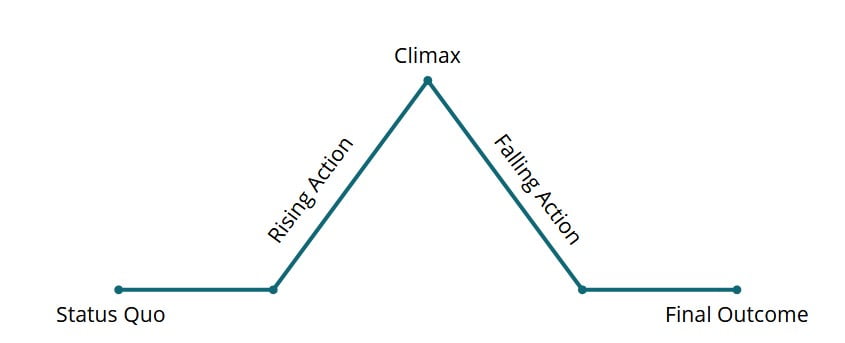
For many people, this is enough of a structure on which to hang the main points of their story. Using these stages will help ensure the story feels satisfying to a reader.
Imagine how a reader might feel if you wrote a story with the stages in this order:
- Final outcome
- Falling Action
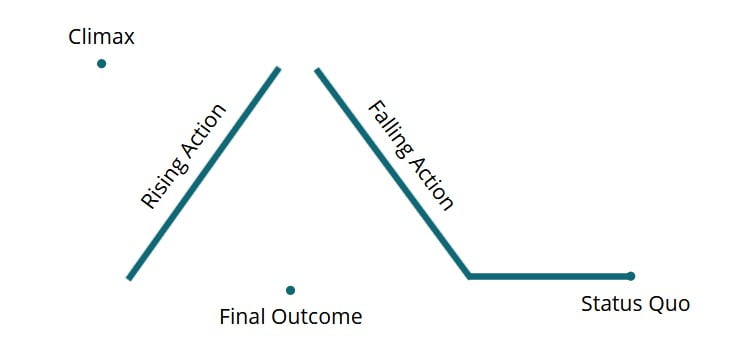
It hurts just to look at it. Imagine what it would be like to read.
Applying this distortion to the simplest of plot outline makes it clear why getting the stages out of order can be confusing, unsettling and even nonsensical.
This is an important lesson, because while the diagram above is almost laughable, it might not be so obvious when stages are out of order when using a more advanced structure. However, there’s a high chance that readers will still feel less engaged and emotionally involved.
The most popular and widely used plot structure is probably the Hero’s Journey, which goes something like this:
- Ordinary World
- Call to adventure
Refusal of the Call
- Meeting the Mentor
Crossing the Threshold
- Tests, allies, enemies
- Approach the innermost cave
- Resurrection
- Return with Elixir
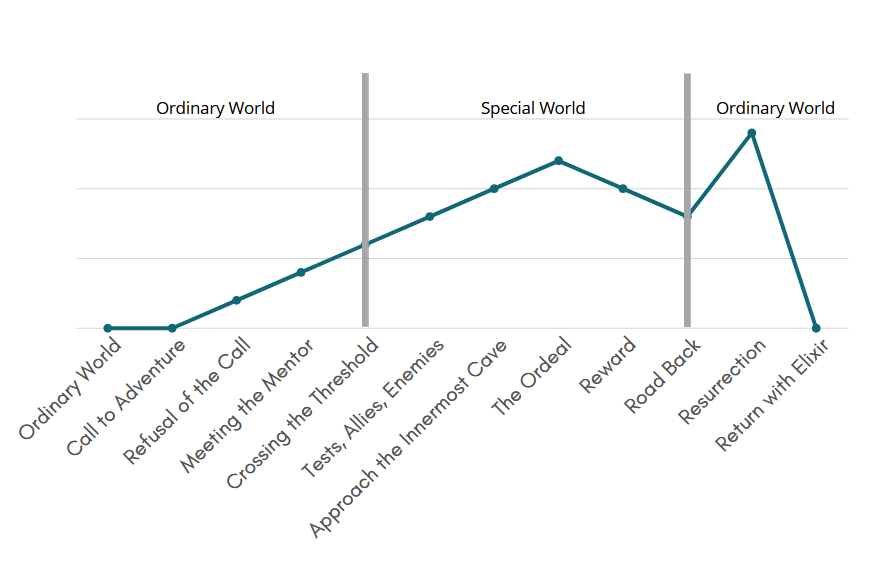
In this diagram, the higher the line, the higher the tension and stakes. The dip towards the end additionally represents a loss of hope.
Traditional diagrams depict the Hero’s Journey as a circle, but I find that doesn’t sit right with me, as it means the end point appears to be exactly the same as the start point.
For me the linear diagram better represents the concept the the hero returns ‘home’ (back to the baseline), but they are further forward than they were at the start.
Here’s a very brief explanation for each of these stages:
You can read about the stages of the Hero’s Journey in more detail here .
Before we go any further, let’s address some questions that writers sometimes raise with regards to the Hero’s Journey and other plot outlines.

It’s important to realise that each of these stages can be interpreted in an infinite number of ways, leading to an infinite variety of stories.
At first, it’s easy to be misled (especially by the wording) that this template will force your story into a particular style.
For example, at the most fundamental level, the word ‘Hero’ may give the impression you have to present a sword wielding, brawny young man who longs for adventure - but this couldn’t be further from the truth.
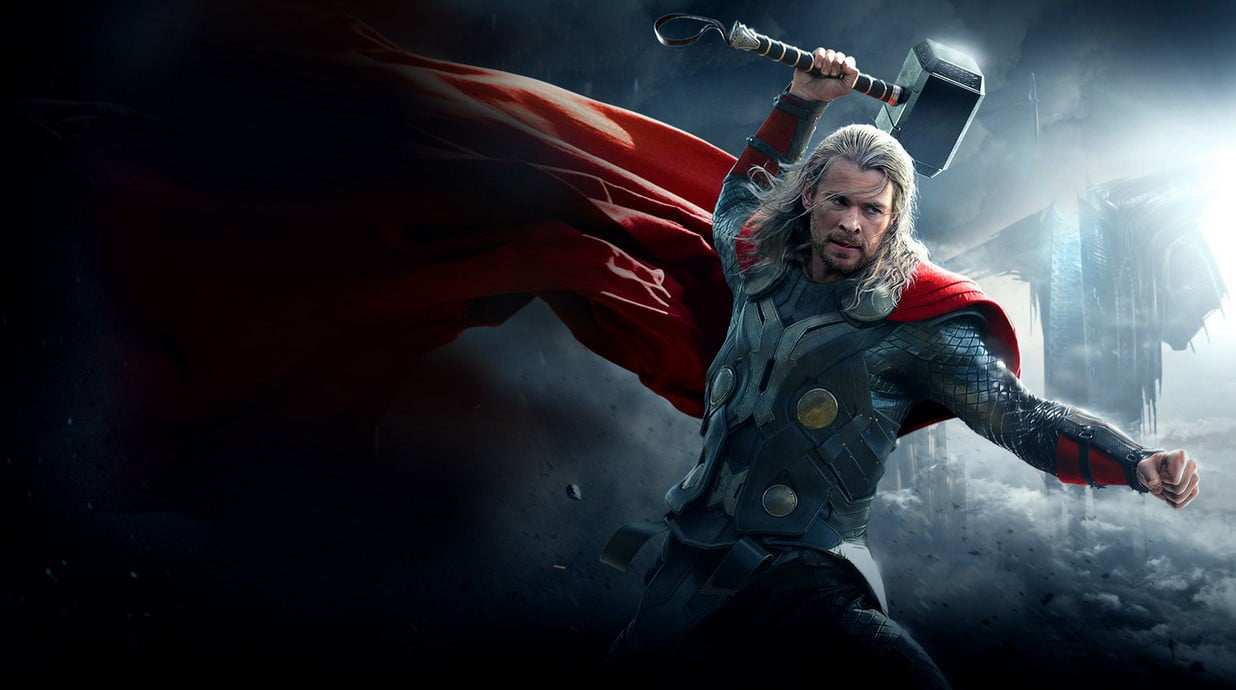
The ‘Hero’ just means the protagonist, and they don’t have to display any traditionally ‘heroic’ qualities at all. We are all the protagonist of our own experience, however flawed and morally questionable.
Similarly, the Call to Adventure doesn’t have to have anything to do with sirens, evil Kings or swordfights. It can be anything that unsettles and ordinary life.
So, while the hero could be a young man longing for exciting quests, and his call to adventure could be an old wizard telling him of a dragon who’s kidnapped a princess, it could equally be:
- A high school airhead who’s just been dumped and decides to go to law school to try to win her boyfriend back.
- A little girl who follows a rabbit down and hole, then has to find her way home.
- Or even a widowed fish who needs to find his missing son.
Click here for more examples of the Hero’s Journey in a range of stories.
If you start looking out for it as you watch movies and read books, you will start to see how varied the interpretations are, and how the same concepts that be found in all genres and mediums.
In fact, because of your own personal experience of life and the world, you couldn’t write a book that was the same as someone else by following these stages, even if you tried.
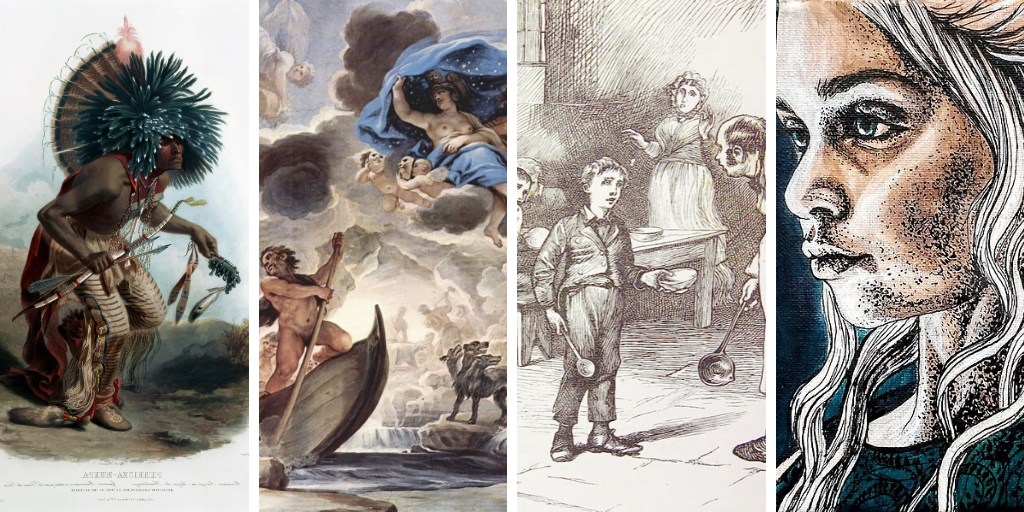
One of the most important things to remember when following the Hero’s Journey and its variations, is that nobody invented them.
An academic called Joseph Campbell is credited with analysing thousands of stories spanning the globe, from those told around tribal campfires to modern books and movies.
In doing so, Campbell identified similarities that emerged beyond all the borders and ages, and attempted to distil these common patterns into one fundamental ‘monomyth’. The Hero’s Journey is a modernised interpretation of that monomyth.
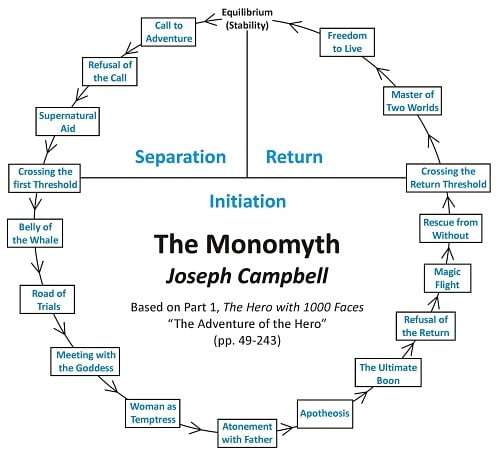
So, they are not a set of rules made up and laid out by some authority. They are a fundamental structure that emerged from the collective consciousness of our human psyche.
The success of the vast majority of bestsellers and box office huts is testament to the power of the Hero’s Journey to resonate with large numbers of people.
Cautions of the monomyth

Having said that… all interpretations we make of the world are shaped by our own experience, and the original monomyth laid out by Campbell certainly contains problematic terminology and elements.
Glaringly, there are those which focus on the traditionally male perspective and experience, but there are also issues with bias towards the western experience and attitudes of the time regarding dominance and individuality.
Campbell can’t be blamed for that, none of us can see the limitations of our own perspective because they are beyond our peripheral vision. However, it also means that we don’t need to treat his analysis as ‘sacred’.
And of course, the Hero’s Journey is already an interpretation of the original work, so it has already begun.
Despite these qualifications, disregarding the monomyth and Hero’s Journey would be throwing away some of a writer’s most useful tools.
And we can continue that work by evolving it to fit our changing experiences and attitudes to the world and our way of existing in it.
Of course, you could choose to throw it all out and start from scratch, creating your own stages, pacing and progression. But there is a much stronger chance you won’t tap into the collective unconscious; in which case you’ll need to work much harder to engage the audience.

Many have already begun this work, and created interpretations and variations which make it clearer that the emphasis is on a personal journey, rather than anything to do with men slaying dragons.
An excellent one is the Character Driven Hero’s Journey, as developed by Allen Palmer:
Genre specific novel outline templates
And of course, people who write in specific genres are able to identify stages and elements which tend to crop up consistently within their own genres, and have a positive effect on the popularity of their stories.
We’ve created a bunch of genre specific plot outline templates, including:
- Detective Noir
- Character Driven Hero’s Journey
- Mystery / Crime Thriller
- Short Story
You can access all of these below.
Stronger first draft
If you outline your plot before you start writing, you can be confident your first draft will have a solid structure from the outset, rather than hoping for it to emerge organically, or having to retroactively go and apply it
This will save time and effort when it comes to redrafting and editing towards your final manuscript.
Direction and Completion
Knowing where you’re going helps you get there.
Writing a novel is a mammoth task which can feel overwhelming. Having a plot outline helps break it down into manageable chunks, with clear goals.
It can keep you motivated and on track.
Frees up creativity
Contrary to stifling creativity, having a plot outline frees you up to let the words flow, because you don’t have to be preoccupied with the worry that you’re going to write 50,000 words then find yourself in a dead end.
Could take away the thrill of discovery
Many writers don’t want to know too much about their story before they start, as the knowing sucks out the excitement of discovering the story as they write.
And some successful writers report that they never plan before they start.
But when you analyse their work, you will usually discover that the stages are in fact. So what gives?
It’s not that they’re being dishonest, it’s that they have absorbed these patterns from their experiences of books, movies and life and are applying them sub-consciously.
If you don’t feel writing out a plot outline works for you, then it’s even more important to internalise the universal structures, so you can rely on your subconscious to take care of it.
Procrastination
Writers can sometimes be procrastinators to professional levels, so make sure you’re not doing your plot outline to death just to avoid starting your first draft.
But the fact is that there are certain things that tap into our human psyche. Skilled writers will subvert and break traditional structural conventions to great effect – but it’s unlikely they’ll do so by accident.
You have to know the rules before you can consistently break them effectively, so know about plot outlines and what they do is a great tool to have in your writer’s toolbox, whether you decide to use them in the end or not.
Find a plot outline that suits you
Read through a range of plot outline templates and see which resonates with you the most.
Write a few sentences for each of the stages
For each of the stages write a few sentences, or a paragraph which describe how that stage manifests in your novel.
Read through the entire thing and make sure it flows and makes sense. Make adjustments for consistency.
Ongoing improvement
As you’re writing your first draft and subsequent drafts, treat your plot outline like a working document, not a set of commandments carved into stone.
If it needs tweaking and updating, that’s fine. You may decide to reorder the stages, add new ones, or remove some.
Don’t be too rigid
As with all rules of thumb, you can break the conventions to great effect – the important thing is that you know what you’re doing and why, rather than just fumbling because you don’t have the right tools in the first place.
Following the stages fairly closely is the easiest way to take advantage of the patterns of the collective unconscious. Deviating from them is to be encouraged, but you have to be aware of the impact it will have, and realise you may have to work harder and use other techniques to engage the audience and keep them emotionally hooked.
Good luck with your plot outlines! Please share your plot outlines and other plot outline resources in the comments!
8 Plot Outline Templates - Free Downloadable PDFs
The plot structures below are available as free downloadable PDFs, but there is a better way to use them.
They are all fully integrated into the Novel Factory novel writing software.
There, you can select a template from the dropdown menu and begin writing within the software.
You are given the option to add and delete your own stages, sort them into acts, and drag and drop them into the order you prefer.
It takes using these novel outline templates to a new level of efficiency.
Get a free trial of the Novel Factory to see it in action.
If you like these, you may also like our free book writing worksheets.
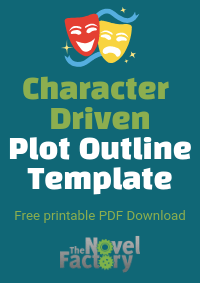
Character Driven Plot Outline
This story outline is driven by the development of a compelling character arc .
The protagonist begins with something missing from their existence, even though they may not be aware of it.
Through the story, they learn why they feel incomplete and must face their demons and deepest fears in order to evolve as a person and become whole.
Incomplete - establish the hero's 'want' and their 'need'
The protagonist is unfulfilled in their normal life. There will be two things missing – one thing that they think they want (like money, fame, a Porsche – you get the idea) and another thing which they haven’t thought of, but is the real thing that will give them fulfillment. (compassion, self-confidence, etc).
Unsettled - an outside force appears (e.g. invitation or threat)
The protagonist’s world becomes unsettled by an outside force. An invitation, threat, or attack, perhaps.
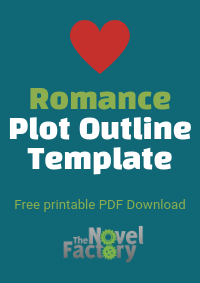
Romance Novel Story Outline
The classic romance story structure, including all the major story beats and complications.
Based on characters having personal character arcs and motivations that conflict with the romance aspect.
Introduce the protagonist (who feels incomplete)
Introduce the main character’s world. They may be successful in many areas of life, but clearly, there’s a gap when it comes to a loving relationship. Foreshadow the conflict that will create challenges for the romance to come. Establish the hero’s non-romance based goal.
The protagonist meets love interest but there is conflict
When the two main characters first meet it is extremely likely that they will hate each other on sight. Show how they are from different worlds, with strongly contrasting views on life.
Characters are forced to spend time together
Due to external factors, the characters are forced to spend time together, and even to cooperate to achieve a goal. They are still at odds, but the sparks are kindling some fire… A friend may even comment on it, but the couple-to-be both hotly deny there is an attraction.
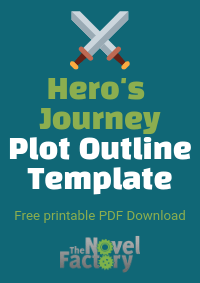
Hero's Journey Novel Plot Outline
The Hero's Journey, as proposed by Joseph Campbell, trimmed to the bone and applicable across all genres - not just sword-wielding fantasies.
The Ordinary World
To begin with, you set the scene and introduce the main character. This is the place to establish what’s missing from the main character’s life, and give hints about the story to come.
Call to Adventure
An external force challenges the main character. This is usually an invitation or a threat.
The protagonist often expresses reluctance to answer the Call to Action. They may be afraid or feel poorly equipped for such a challenge. Sometimes the reluctance is expressed by a supporting character, not the hero.
Meeting with the Mentor
The mentor is a character of authority to the protagonist. They provide advice and useful gifts, such as weapons or talismans. The mentor often reflects the tone of the story - a tragedy will have a one who is toxic or destructive (or one who is already dead), a children's fairytale will have a benevolent all-knowing one, a dystopia may have an unreliable one. The mentor is usually a recurring character.
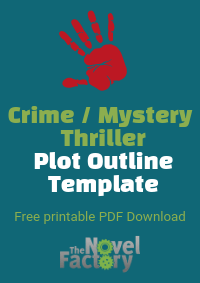
Mystery / Crime Thriller Plot Outline
A fairly detailed structure that explains how to develop the sleuth's inner character journey alongside solving the crime and uncovering deeper conspiracies.
Present the crime
Mysteries and crime thrillers often begin with a prologue in which the inciting crime takes place. The first crime is very likely to be a murder or kidnapping. This is from a POV that is not the main protagonist, it may be from the point of view of the victim, the killer, or an omniscient narrator.
Introduce the sleuth
Next, we meet the sleuth, who is the protagonist. This person is often a professional detective, but not always. Sometimes they are a normal person thrust into a situation that gives them no choice but to take action – usually because someone they love is missing or threatened.
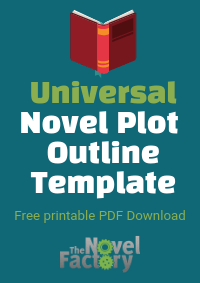
Universal Novel Plot Outline
Based on the hero's journey, but rejigged to make the terminology more generic and easy to apply across genres.
The Status Quo
Introduce the main character’s world and establish their want and their need. The character clearly has things missing from their lives and they are unsatisfied with their current existence.
The Complication
Something happens to shake the character’s world and offers them an opportunity, or creates a threat.
In pursuit of the goal, the character crosses some kind of barrier (could be physical but doesn’t have to be), which means it is not possible to return to their old life.
A New World
The character is now in a new and unfamiliar world, trying to navigate unknown rules and challenges.
External Obstacles
The character must face a series of conflicts, each of increasing difficulty and stakes. Some they will win, some they will lose.
Internal Obstacles (temptation)
The most compelling stories will pit main characters against their inner demons, forcing them to overcome them in order to become a better person.
Dark Moment
In order for the high of the climax to have the greatest effect, you should precede it by taking your character as low as they can go. Despite all the progress they’ve made against external and internal obstacles, something should happen at the end of the second act which makes everything fall apart and makes them certain that all is lost.
The Final Conflict
This is the final battle where they throw everything they’ve learned and everything they’ve become, against the great enemy - and in the vast majority of cases, they will be victorious.
The Return Home
Bring your readers back down to earth after the climax, show the hero's new normal and tie up any loose ends.
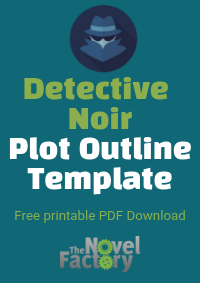
Detective Noir Novel Plot Outline
Drawn from the detective noir / hard-boiled genres, a dark mystery structure with dark undertones and plenty of betrayal.
The protagonist of a detective noir is often an anti-hero. An outcast, often someone who held a heroic position in the past, such as a police officer or soldier, but who has fallen from grace. A sense of alienation should be established and maintained throughout the story.
The siren walks in
A client will appear, seeking help with a case – usually a murder or missing person. They may appear vulnerable or wanting to help, but they will have a deep, dark secret that is bound to get the protagonist into hot water.
Although the femme fatale trope is common, there is no requirement for the siren to be female, or sexy, and in fact, mixing it up may make your story more refreshing.
Initial investigation
The protagonist begins their investigations, searching for clues. This will often be done at night, and in the shadows. Throughout the investigation, there should be a healthy amount of red herrings.
Note - click here to read about the difference between hard-boiled and noir.
And you can read more about the elements of detective noir here.
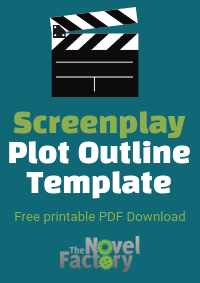
Screenplay Plot Outline
Based on Hollywood Blockbusters.
Stage I: The Setup
Create the world and transport readers there. Introduce your hero in their everyday life and create empathy with them. Hint at the hero’s inner conflict (their ‘need’).
Turning Point #1: The Opportunity (10%)
10% into the story something new and different must happen to the hero. The Opportunity begins the journey and presents outer motivation.
Stage II: The new situation
They find themselves in a new situation. The newness of the situation may be internal (a new emotional state or attitude) or external (change in circumstances / location). The hero tries to navigate this new, unknown territory and begins to formulate a plan for achieving their outer motivation.
Turning Point #2: The Change of Plans (25%)
The outer motivation transforms into a specific, visible goal with a clearly defined endpoint.
Stage III: Progress
The hero makes progress towards their outer motivation. They may receive training and / or mentoring. There are conflicts and setbacks, but overall they seem to getting closer to achieving their goal.
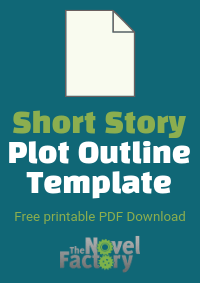
Short Story Plot Outline
A seven-point system for writing a short story.
A character
In a short story you can often get away with characters being larger than life, or having distinctive qualities that are more exuberant, because the reader won’t be experiencing the character for so long that these characteristics begin to become tiresome or irritating.
Is in a situation
Very quickly you need to introduce the character’s world and their place in it. What is interesting about this character and their life? Make sure the reader feels excited and intrigued.
With a problem
At the heart of all good fiction is conflict. What problem does your character have to solve? Try to get to the problem as quickly as possible (within the first few paragraphs) so the reader is hooked and needs to know how the problem is going to be resolved.
They try to solve the problem
The character should begin to make efforts to solve their problem.
But fail, making it worse
But these efforts have the opposite effect, and the originally small problem begins to grow into something really serious.
12 Creative Writing Templates for Planning Your Novel

It’s that time of year when thousands of writers around the world prepare to type faster than a speeding bullet, drink coffee more powerful than a locomotive, and leap tall deadlines in a single bound. Of course, we’re talking about National Novel Writing Month (also known as NaNoWriMo), and the challenge, should you choose to accept it, is to create a 50,000-word story from scratch in just 30 days, from November 1–30. How’s that for productivity?
We’ve met a lot of writers who use Evernote to plan, brainstorm, and sometimes even draft their novels. But as any fiction writer knows, the hardest part of any new work is figuring out what to write about in the first place: What happens next? What motivates these characters? What’s this story about, anyway?
Only you can answer those questions, but it helps to figure them out early. If you’re going to write a novel in November, the time to plan is now . With that in mind, we’ve created a dozen Evernote templates to help you collect and structure your thoughts. Many of them include questions or prompts to get you started, but you can feel free to replace those with inventions of your own. Start filling them out today; they’ll keep you anchored while writing your 30-day masterpiece.
Power tip: To use any of the note templates mentioned in this article, click the “Get it »” link and then click “Save to Evernote.” The template will be added to your Evernote account in the notebook of your choice (we recommend setting up a new notebook just for templates). You can then copy, move, rename, and edit the note to suit your needs.
Templates for plotting and outlining your novel
Are you the sort of writer who wants a solid plan in place before typing “Chapter 1”/ You’ll need a roadmap that begins with a premise and culminates in an outline. There are a lot of different ways to get there, so we’ve made templates for walking you through several of the most popular plotting methods. You can choose the one that fits your personal style.
1. Story premise worksheet
Your premise is the foundation on which the entire novel is built. With this step-by-step guide, you’ll think about who your protagonist is, what they want, and the problems or conflicts they must overcome. The end product is a concise, two-sentence explanation of what your story is about.
2. Three-act plotting template
Remember learning in school that all stories should have a beginning, middle, and end? This classic, logical method of storytelling takes you from your story’s initial setup and inciting incident through rising action, turning points, and resolution.
3. Story beats template
Adapted from the world of screenwriting, this popular method replaces the concept of acts with a set of milestones that commonly appear in many kinds of stories. Hitting these “beats” gives your story a rhythm while leaving the details open to your imagination.
4. Snowflake method checklist
Maybe you’d rather work from the top down than from the ground up. Inspired by fractal geometry (really!), Randy Ingermanson’s “snowflake method” grows an entire novel from a single sentence. Each step of the process methodically expands upon the one before, filling in details until you have a complete draft.
5. Story timeline tracker
Regardless of your novel plotting method, keeping track of time in your novel is important. Did your hero get that threatening letter on Tuesday or Sunday? Does the next scene happen on a sunny morning or in the dead of night? This template will keep your novel’s clock ticking smoothly.
6. Chapter outline
Once you’re in the writing groove, you may not want to wade through all your plotting notes to remember what comes next. This checklist gives you a scannable view of your plot, chapter by chapter and scene by scene, making it easy to see what you’ve completed and how much lies ahead.
Templates for Building Characters in Your Novel
Even if you aren’t the plotting and outlining type, the more you know about your characters and the world they inhabit, the better your writing will be. The following templates will help you brainstorm and remember the little details that make a story come to life.
7. Character master list
Got a lot of characters? This “quick and dirty” list helps you remember who’s who at a glance. Add names, ages, and notes about your characters. And you can drop in a photo or drawing of each character to help you visualize your story.
8. Character profile worksheet
If you want to go deeper with your characters, you’ll need a full dossier describing their physical appearance, manner of speaking, behavioral traits, and background. This questionnaire covers everything from their hair color to their biggest secret.
9. Character biography
Now that you know who’s who, here’s a template for figuring out how they got to the situation in your novel. When it’s time to write a flashback or refer to a past event, you’ll breathe easier (and save yourself some edits) knowing you can look up the dates in this simple timeline.
10. World-building questionnaire
So far, we’ve been talking about the what and who of your novel, but where and when are just as important. Whether you’re writing about a fantasy world or the town you grew up in, this questionnaire will get you thinking in depth about the setting. Then you can write richer, more realistic scenes that draw the reader into your world.
Pulling it all together: Project trackers
A novel has a lot of moving parts. When you factor in research, articles saved with Web Clipper , and random jottings about who did what to whom, you’ll probably find you have a lot of notes for your writing project. Consider adding a couple more to keep it all straight: a dashboard where you can manage the whole thing and a checklist for bringing your completed opus to the world.
11. Story dashboard note
For a quick overview of your project, use this “dashboard” to track its status. Add it to your shortcuts for easy access, and insert links to related notes to save time on searches. If you’re writing in Microsoft Word or Google Docs, you can paste the file or link into the body of this note and jump into your manuscript with a click.
12. Self-publishing checklist
Planning to publish that novel when it’s done? Here’s a checklist of all the important steps, from writing a blurb to editing, design, and proofing. TIP: If you copy this checklist into your dashboard note, you can easily track your novel from first brainstorm to final publication.
Ready, set, write!
If you’re up to the challenge, sign up for free at nanowrimo.org . Evernote will be posting more tips and strategies to our blog and social media throughout October and November. We invite you to follow along!
Originally published on October 2, 2017. Updated on October 12, 2022.
Three Act Structure Template
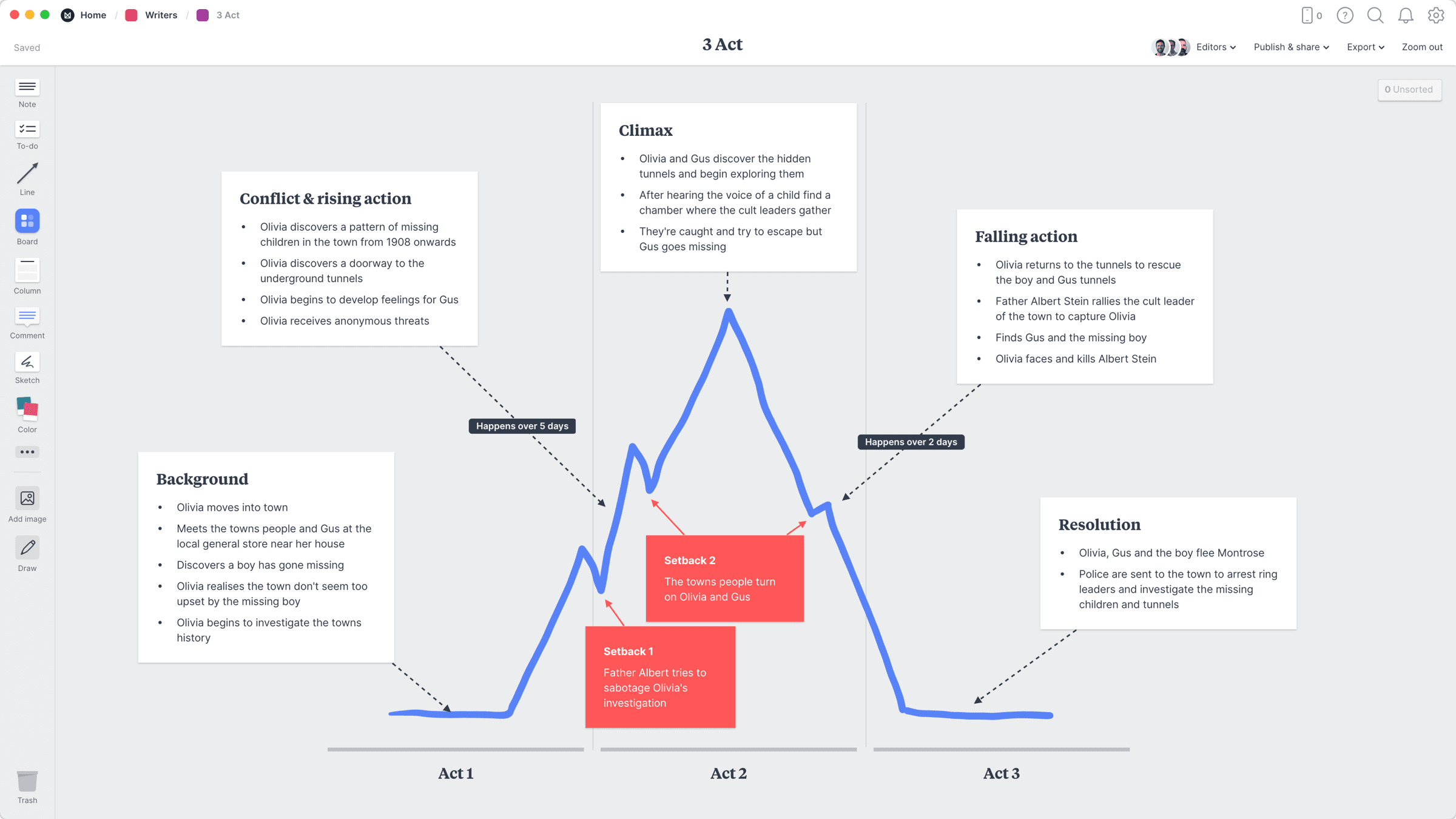
Define the three acts in your next story
The three-act structure is a classic creative technique used in film and literature since the time of Aristotle. It helps you plan your story at a high level in three parts (acts), often called the Setup, the Confrontation, and the Resolution.
This template gives you the building blocks to map out your structure in as much detail as you need. You'll see how each plot point affects the following one and ensure that your story has a smooth transition from the beginning to the end.
This template is part of our guide on How to plan a novel .
- Explore ideas
Organize visually
- Share with your team
- Gather feedback
- Export to PDF
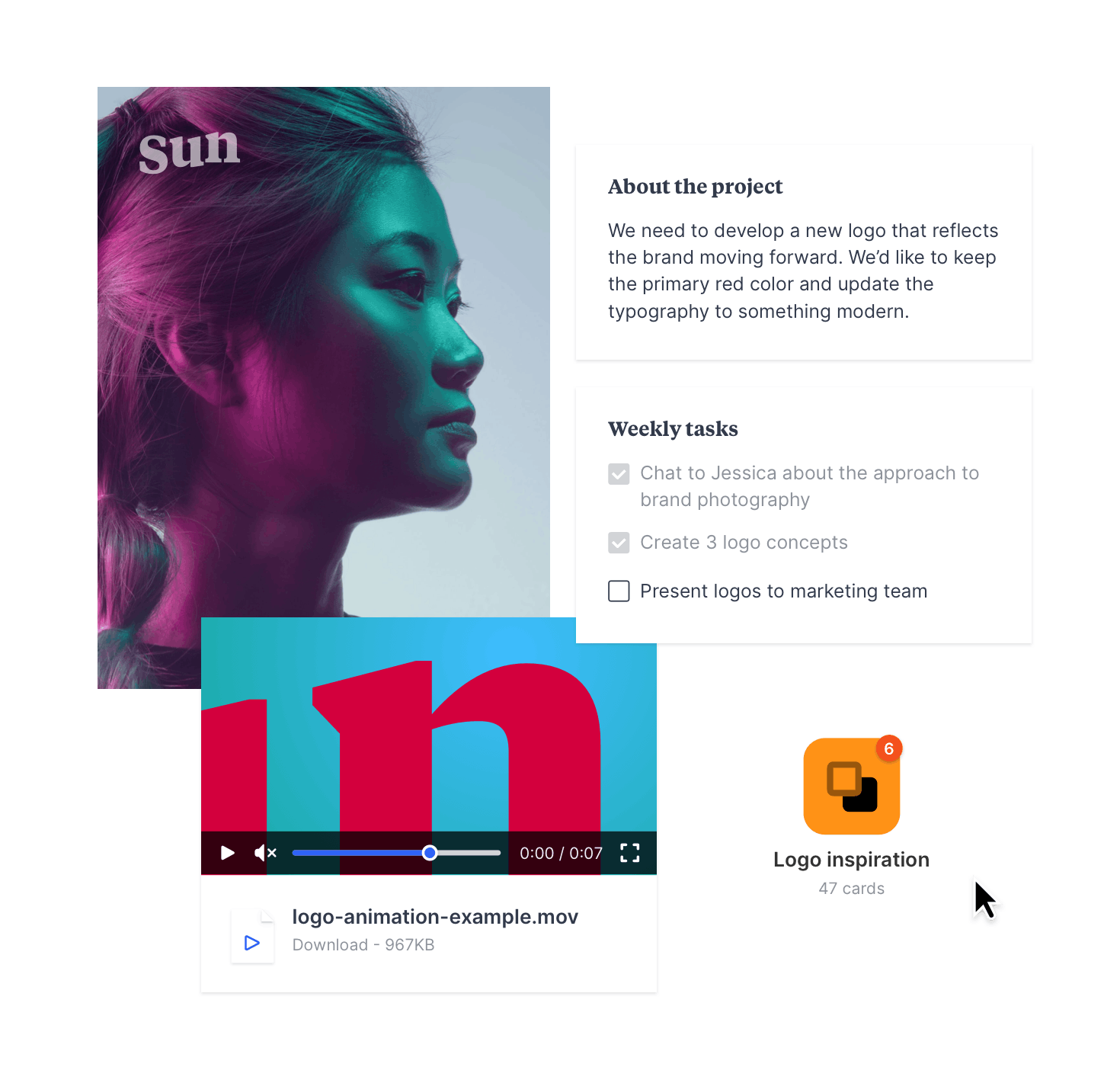
Collect everything in one place
Milanote is the visual way to collect everything that powers your creative work. Simple text editing & task management helps you organize your thoughts and plans. Upload images, video, files and more.
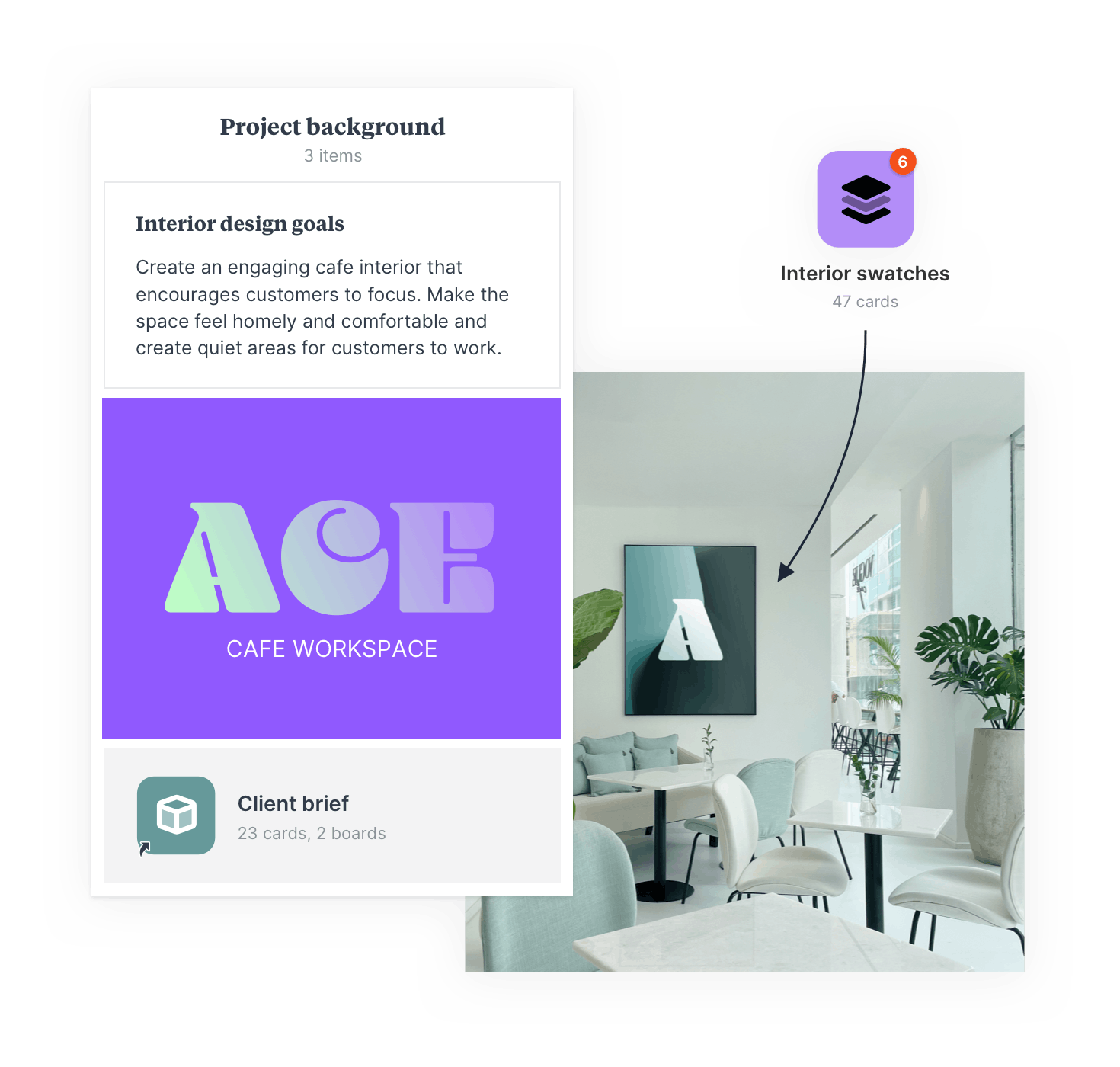
Milanote's flexible drag and drop interface lets you arrange things in whatever way makes sense to you. Break out of linear documents and see your research, ideas and plans side-by-side.

Collaborate with your team
Milanote boards can be a private place to think, or a shared workspace for collaboration—you're in total control of who sees what. Instantly see your team's changes, leave comments, and never miss a thing with smart notifications and alerts.
Organize your ideas & planning in one place.
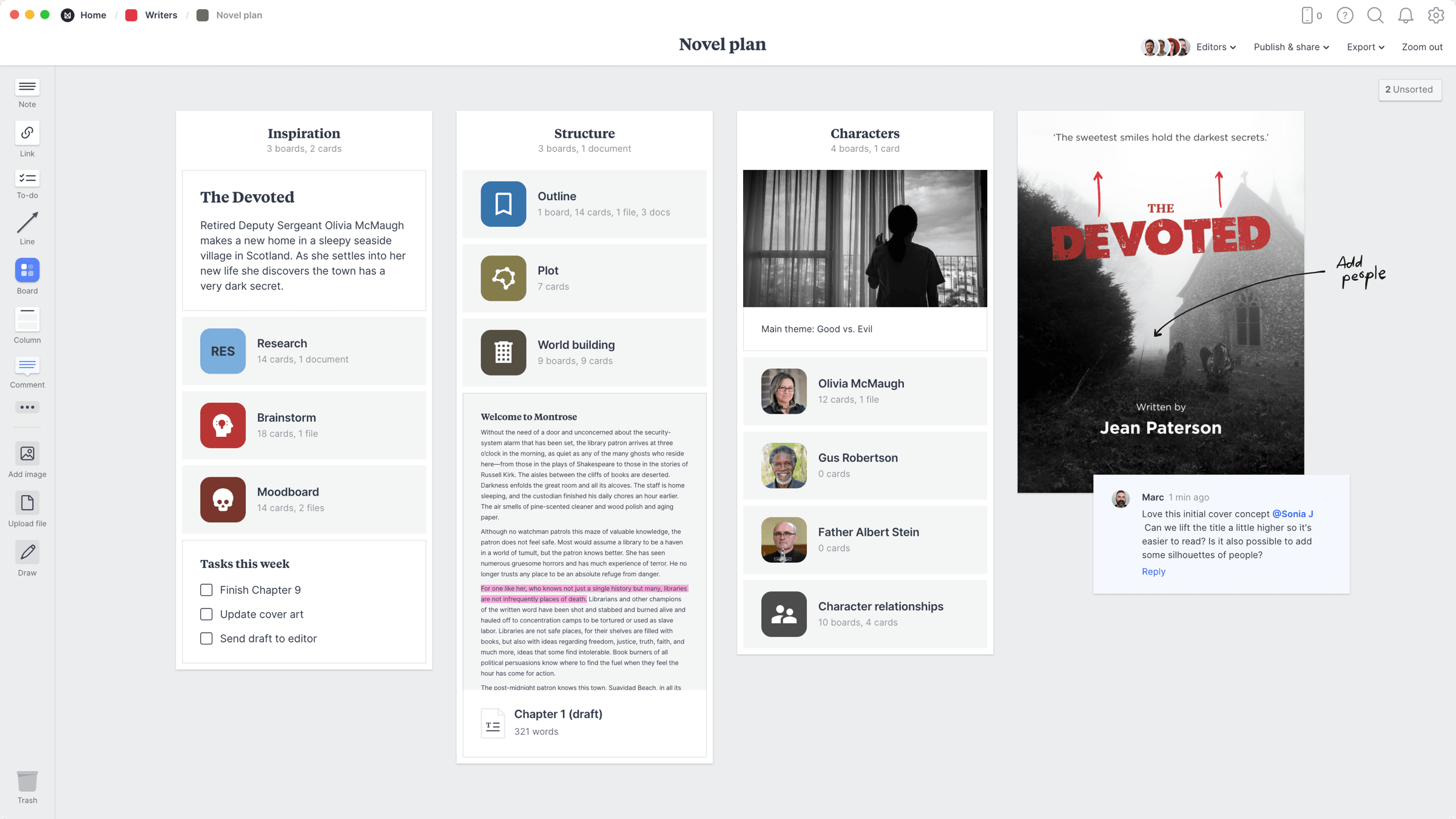
Bring your characters to life.
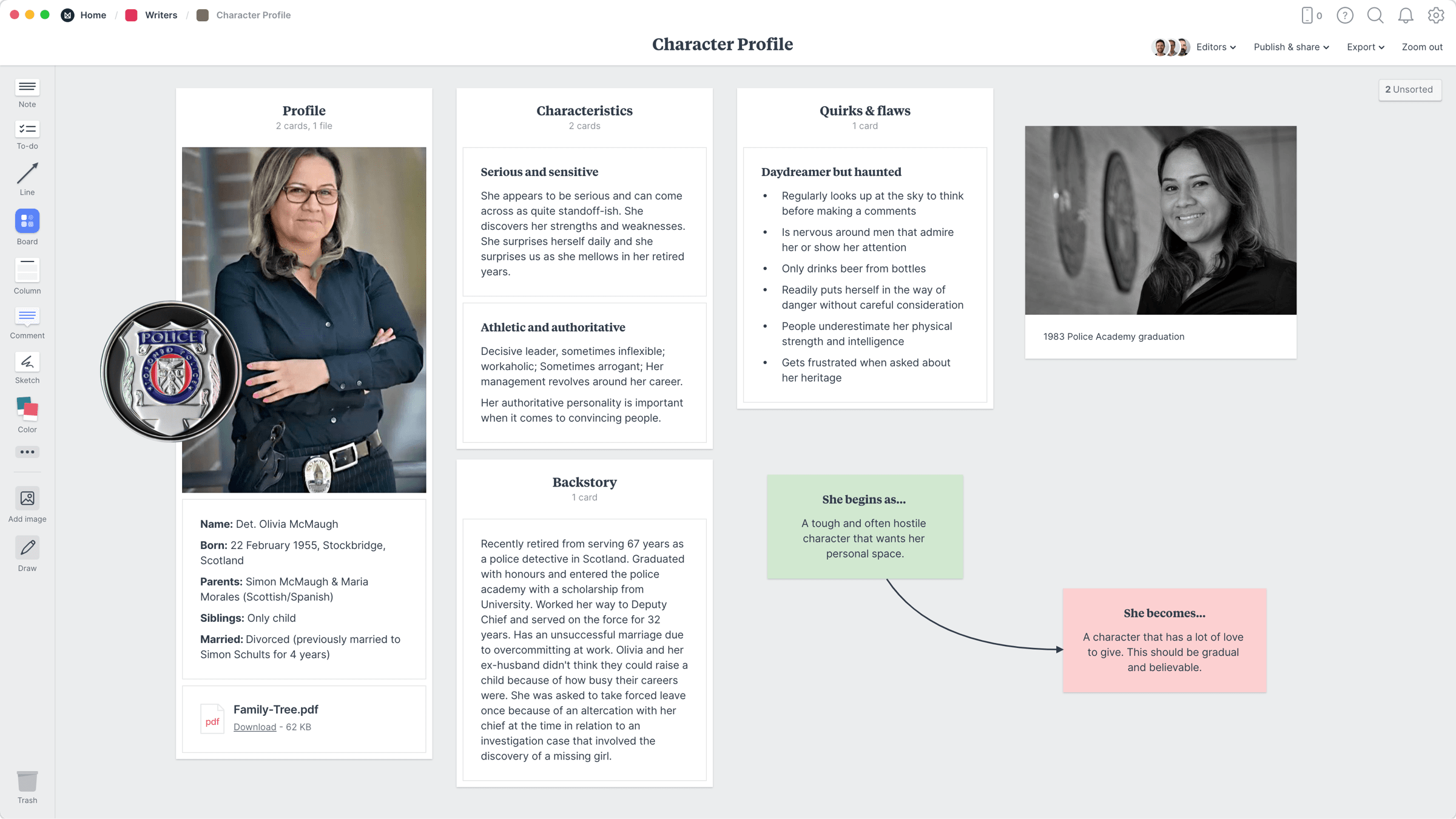
Plan your story outline, plot & scenes
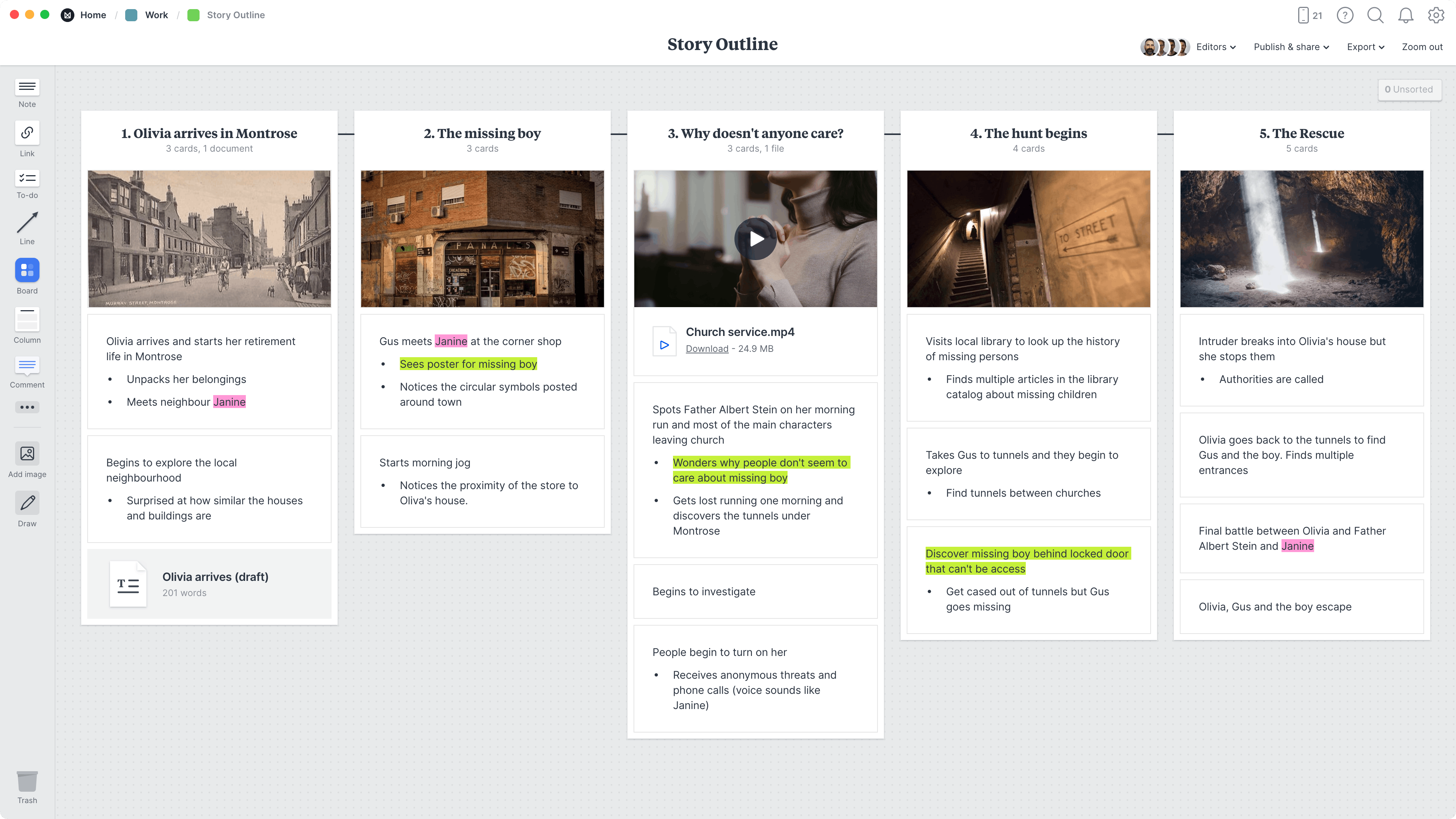
Collect & organize your research.
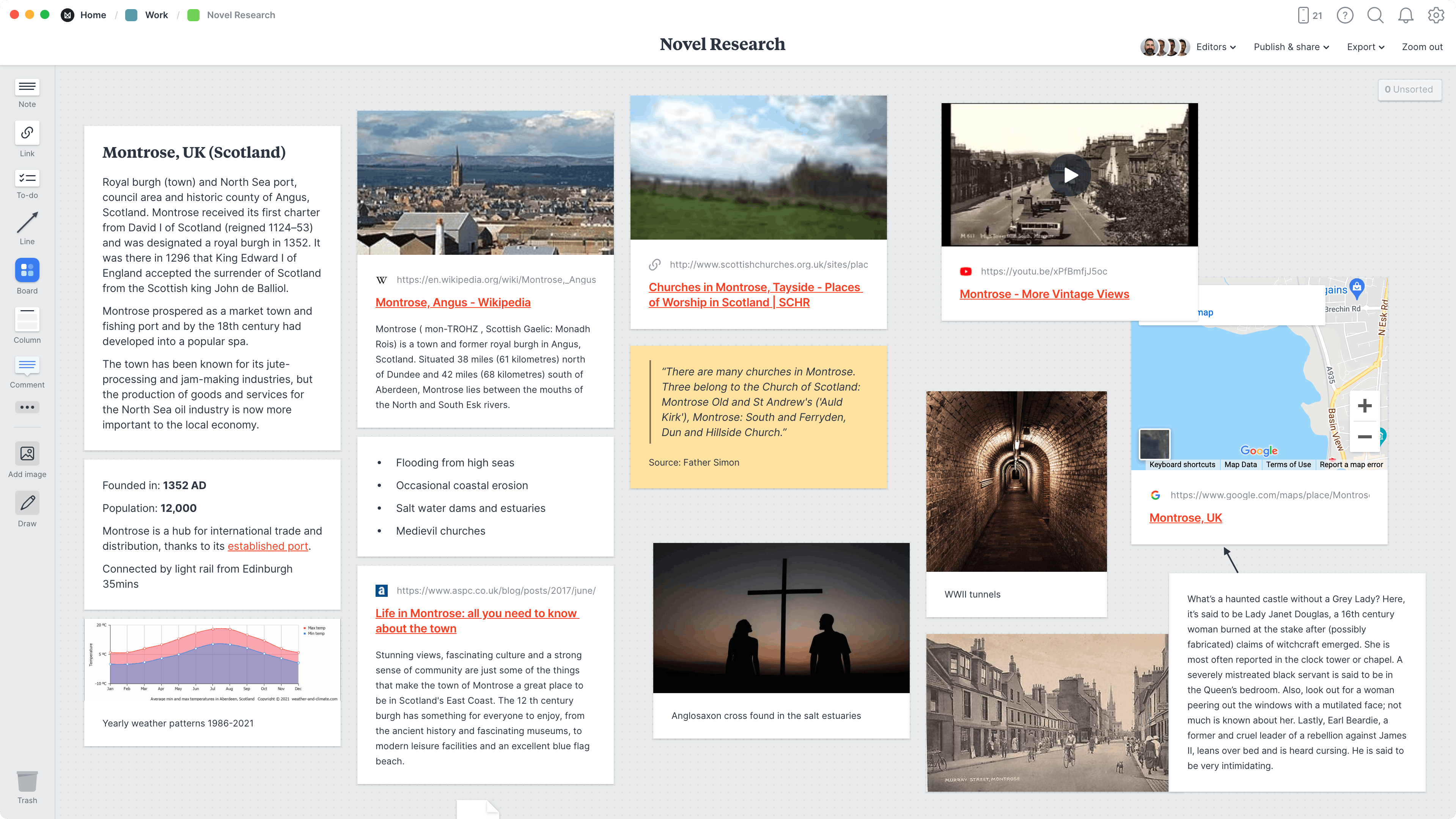
Turn an initial idea into something amazing.
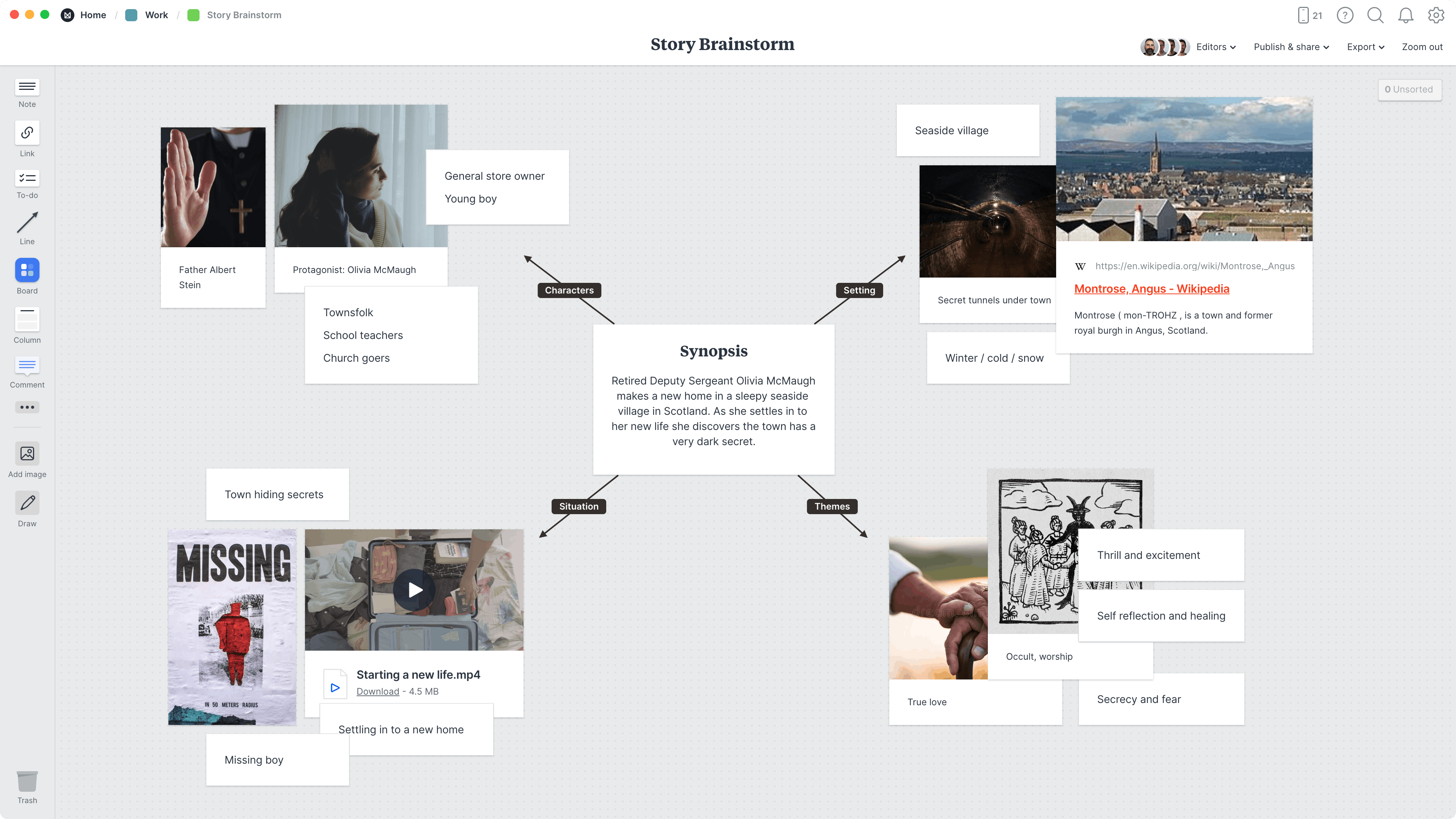
Creative professionals from these companies use Milanote
Map out your story.
Map out the plot points of your story
Sign up for free with no time limit
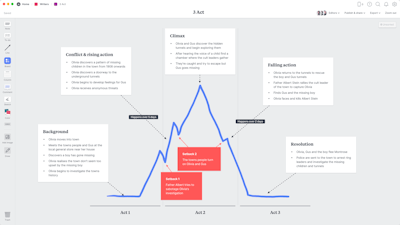
Milanote is where creative professionals organize their most important work.
Free with no time limit
Create your account
VIDEO COURSE
Finish your draft in our 3-month master class. Sign up now to watch a free lesson!
Learn How to Write a Novel
Finish your draft in our 3-month master class. Enroll now for daily lessons, weekly critique, and live events. Your first lesson is free!

Blog • Perfecting your Craft
Last updated on Dec 06, 2023
How to Outline a Novel in 9 Easy Steps
This post is written by author and editor Kirsten Bakis . She’s an award-winning novelist with 25 years experience as a writing coach, developmental editor, and teacher.
Here’s the most important thing about novel outlines: If you write one, it will change before your last draft is done — probably a lot. This is because, whether you think of yourself as a plotter, pantser, or neither, your book is going to evolve as you write it. And that’s a good thing.
There are things you can’t know until you’ve drafted your novel — and you’ll learn even more when you revise. To quote George Saunders, “An artist works outside the realm of strict logic.” A book has to change and grow as you move through the process of creation.
Most of all, as you create your outline, don’t worry about things like whether your ideas are “good enough” to write about. This will get you stuck before you start. Award-winning author Nicholson Baker’s novel The Mezzanine is literally about a man going out to buy shoelaces on his office lunch break. If that plot can work, yours can too.
You’re going to find out a lot more about your ideas as you write. So don’t judge them, or yourself, at this stage. Many working writers I know actually prefer to outline after they have a draft, and it will be just as useful — or even more so.
So what’s a pre-drafting outline actually for? To get you started and give you a structure to hang your words on. In this post, I’ll share the key steps I've found most useful for outlining novels before writing the first draft.
How to outline a novel:
1. Choose your main character
2. give your main character a big problem, 3. find a catalyst that sparks action, 4. set obstacles on their path, 5. define their biggest ordeal, 6. figure out a resolution, 7. pinpoint the character’s arc, 8. connect the end to the start of the story, 9. put your outline together .
💡 Writing nonfiction? Follow these 3 steps to outline a nonfiction book instead.

At the heart of almost every story is a main character who goes on a journey from Point A to Point B. This journey can be emotional, physical, or both. Your protagonist might travel to new lands; learn, change and grow as a person; or do all of those things.
For this first outline, choose one main character. Remember, this can always change later. You can even add multiple main characters, each with their own journey, after you’re done with this. But right now, start with one.
📝 To Do : Write down your main character’s name. If you struggle to find one, take this character's name generator for a spin. If you have lots of characters in mind and don’t know which one should be the protagonist, don’t freak out! Just choose one for now and go through this ten-minute outlining exercise to see what you get.
For this pre-draft outline, you just need their name. But to further develop your characters and keep track of their unique traits, download and print the free character profile template below.

FREE RESOURCE
Reedsy’s Character Profile Template
A story is only as strong as its characters. Fill this out to develop yours.
You might already know a million problems your main character will face, or you might be coming up with all of this from scratch. Either way is fine! For this outline, choose one Big Problem. Or, if you prefer, choose a Big Goal.
These are two sides of the same coin: Their Big Problem is that they need to reach their Big Goal — and there are obstacles in the way. (Of course there are obstacles, because that’s your story! More on that below.)
Take Daniel Woodrell’s novel Winter’s Bone . The protagonist, Ree, learns that if her dad doesn’t show up for his court date, her family will lose their home.
Problem : Her family could lose the house.
Goal : Save their home by getting her father to show up in court.

Ideally, your problem should have stakes that are high for the main character. For example, Ree’s family is so poor that their house is basically all they have. If they lose it, they lose everything.
On the other hand, maybe your main character’s problem is smaller — maybe they can’t comfortably wear their shoes until they have new shoelaces. That can work, too. The most important thing is that it matters to the character .
📝 To Do : Write down your main character’s main problem. Don’t get hung up on whether you’ve chosen the best one. Choose one and go. You can change this later. You can even give them a random problem to get yourself started.
In most stories, there is usually a catalyst (or inciting incident ) which sparks a series of actions. To find yours, answer this question: When does your character first realize they have this Big Problem (or Big Goal)? Does someone visit them and tell them they’re going to lose their house? Does their shoelace break?
📝 To Do : Describe this moment in one sentence. You can try Pixar writer Emma Coats’s formula: “Once upon a time there was _____. Every day _____. One day_____.” Your catalyst is the “one day” event — the occurrence that launches the story.
What’s the first action your character takes to move forward after the Catalyst? In Winter’s Bone , the deputy tells Bree she needs to find her dad or lose her house in Chapter Three — that’s the catalyst. In Chapter Five, she sets out on the first leg of her journey, to visit the uncle who might know his whereabouts — that’s her first action.

The Mezzanine is actually told slightly out of chronological order (a discussion for another post!) but we still see the same catalyst/action progression: At the start of Chapter Two, the narrator discovers his shoelace is broken; a few pages later he attempts to solve his problem by tying its two halves together.
Remember that your character’s first action won’t solve the Big Problem — otherwise the story would be over. It may be an attempt that will fail, or an action that will cause the next step to be revealed.
📝 To Do : Write one sentence to describe this action. We often like characters who are trying their best to get what they want. Having a protagonist who is active and determined — even if they make mistakes! — is a good way to keep readers engaged.

GET ACCOUNTABILITY
Meet writing coaches on Reedsy
Industry insiders can help you hone your craft, finish your draft, and get published.
Golden Age Hollywood director Billy Wilder famously described plot as: “Get your character up a tree. Throw rocks at them. Get them down.”
In Winter’s Bone , Ree’s family will lose her house if her dad doesn’t make his court date — that’s the tree she’s up. But she hasn’t seen him for ages, and no one knows — or maybe, no one wants to say — where he is. And: The more people she asks, the more she gets told to leave it alone and not try to find him — or else. These are the rocks that get thrown at her — the obstacles she faces on her journey.
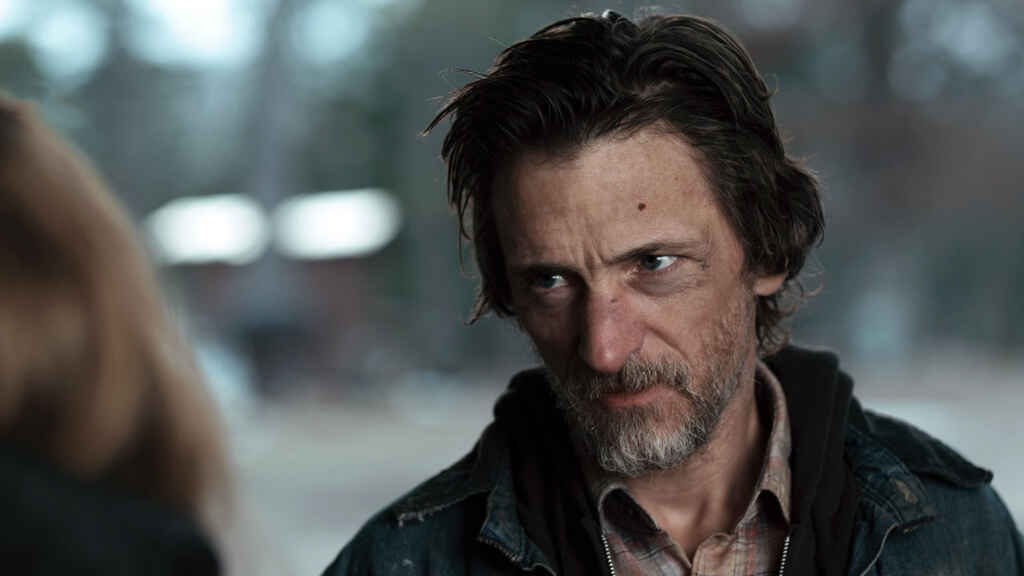
📝 To Do : Write down three to five “rocks” for your main character. Bonus: Make them go from bad, to worse, to even worse. Don’t worry if you don’t immediately know what these should be. Make some up! Writing is truly just making stuff up, then changing it when you revise. Might as well start now.
This is a key plot point in almost every story. It’s the moment when things look dark and hopeless. Your narrator has a goal, and there’s at least one scene where it appears there is absolutely no way they can ever, ever reach it. In the 12 stages of The Hero’s Journey , this is the one called The Ordeal. In film, this stage is often referred to as the “All is Lost” moment.
Think back to the last book you read. Was there at least one point, somewhere in the second half, where the main character seemed about to give up? It could have been a life-or-death situation; or it could have been a scene where they just felt discouraged and like they weren’t going to solve their problem/reach their goal.
If your character is up a tree having rocks thrown at them, this plot point is the biggest rock of all.
📝 To Do : In one sentence, what is the “all is lost” moment in your story. You know the drill by now! Don’t overthink this — just throw down one idea, any idea, even if it’s a terrible one. This will give you something to revise later. I cannot overstate the mystical, magical power of giving yourself something to revise, no matter what it is.
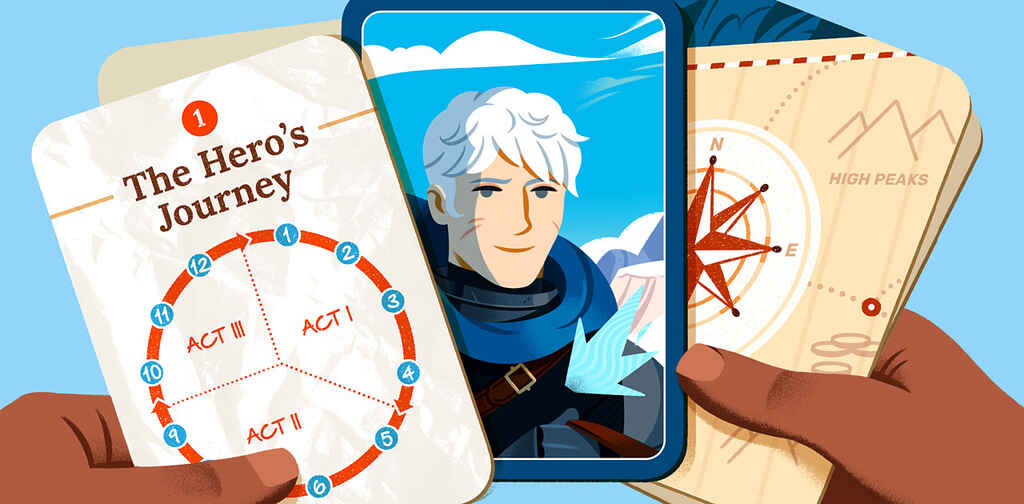
Hero's Journey Template
Plot your character's journey with our step-by-step template.
How is your character going to get out of this situation? This is one of those questions you might not really answer until you’ve written your draft, but come up with something to start with.
Here’s a trick: Make a quick list of your character’s wants vs needs . Often after “All is Lost,” is the moment the character realizes they truly won’t get what they want — but that they will get what they need instead. In The Wizard of Oz , this is the moment Dorothy realizes the Wizard won’t get her back home, after she’s worked so hard — but she’s had the power to do it all along with the ruby slippers, she just didn’t know it.
Bestselling author Caroline Leavitt discusses wants vs needs during a Reedsy Live . Leavitt uses the example of Nick Carraway in The Great Gatsby thinking that if he can just have money and get into Gatsby’s world, he’ll find happiness. The “All is Lost” moment is when Gatsby is murdered. By the end, Nick realizes that world is actually empty — and he walks away. He’s found his solution, but it isn’t what he thought it was going to be at the start of the story.

So when you think of how your character will get out of their darkest moment, ask them if there’s something they need to understand about themselves — understanding it might be their way out.
📝 To Do : Write one to three sentences about how your character gets out of the “All is Lost Moment” and begins to solve their problem. This could be one of your hardest plot points to figure out ahead of time, so again, no pressuring yourself to make it perfect. You can even leave this blank if you need to for now.
The character’s arc refers to the transformation of the protagonist from the start to the end of the story. It highlights the evolution of the character as a result of the challenges and experiences they face. Identifying and outlining this arc is a crucial aspect of developing your story.
Here’s a simple, incredibly useful exercise from Rachael Herron’s Fast-Draft Your Memoir that also works for novels.
📝 To Do : In your main character’s voice, fill in these blanks:
I started out _______.
I ended up _______.
Bonus: Do that three more times — quickly. This will give you more information about your character’s journey. Be specific. If they started out sad and they ended up happy, what made that difference? A new job, a new love, a new sense of self-acceptance?
Tana French’s literary thriller In the Woods begins and ends with a description of the main character experiencing the same patch of woods — first in a seemingly perfect summer when he's a kid; then twenty years later, when he’s grown up. You could see these parallel first and last scenes as “bookends.”
The narrator's situation in the last scene is very different from the first, in every way, from his age, to the landscape’s appearance, to the weather, to his mood and actions. These physical changes reflect the journey he went on over the course of the book.

You don’t have to set your first and last scenes in the same location, but this is a great thought exercise to show yourself how much the main character changes, and how. Or, instead of using a location, try an object — say, a doll that the narrator plays with as a child on page one, that we see on the shelf in their own kid’s room on the last page.
📝 To Do : Make it visual. Look at your fill-in-the-blanks exercise and quickly describe two bookend scenes that would show your character’s transformation. You don’t have to use these exact images in your novel. This is to give you a visual A-to-B journey to track as you write. But you’ll find they’ll help you create a strong beginning and ending.
Congratulations: You just created nine key plot points for your novel! Take a minute to celebrate.
The final step is to create your outline. I love to do this with sticky notes which can then be arranged (and rearranged) on a wall, table, or trifold board. You could also use index cards or just type your notes into a document. It’s key to keep your scene descriptions short, though — one reason why sticky notes or cards are helpful.
📝 To Do : Get your pack of sticky notes, and quickly jot down one sentence to describe each of these key plot points:
- Opening : You can use the first “bookend” you just created.
- Catalyst : Put your Catalyst moment here.
- Action : Put your character’s first action towards their Big Goal here.
- Rocks 1 through 3 : The scenes where your character encounters the obstacles or “rocks” you described above. This step should create three separate scenes.
- The Big Rock : This is the all-is-lost scene you came up with above.
- Resolution : The Solution you came up with above.
- Last scene : For this, use the closing bookend scene you created.
You now have a map of nine key scenes. Choose a spot that works for you — like a section of wall near where you write, a bulletin board, or a table — and arrange them in order. Behold your novel outline! You did it!
💡 You can easily create these nine steps in Reedsy's writing app , where you can also write and format your manuscript.

FREE OUTLINING APP
The Reedsy Book Editor
Use the Boards feature to plan, organize, or research anything.
You can add other scenes later if you choose, such as act breaks, depending on which story structure model you’d like to use — but you don’t need to. You can start your draft right now using these plot points as guideposts.
The most important thing is to remember that when you start writing, your story will change. You may find your initial outline ideas don’t quite fit, and that’s okay — it’s a good thing. It means you’re on the unpredictable, creative journey of writing a novel. Remember what George Saunders said about working outside the realm of logic.
When you’re done with your draft, sit down with this template and do the exercises again, using what you’ve written, and you’ll be amazed at how your understanding of the plot points — and your story as a whole — has evolved and grown. Now go write that draft!

3 responses
Bhakti Mahambre says:
12/06/2018 – 08:19
An informative article along with useful story development aids, I heartily thank Reedsy for their efforts to put this together! #mewriting
Robintvale says:
08/05/2019 – 12:28
Whew so much to read on here I'm at the Premise right now and didn't even have to look at the links to finish it. :D I must be getting somewhere then! (Trying to fix a mostly written book that has a few hick ups. [Merryn] must [steal the book of P. with the trapped god] to [bring it back to the elder adapts back home in Dentree.] or else [Her and everyone else will disappear as the crazed and corrupted god will restart the world.]
kwesi Baah says:
08/02/2020 – 04:30
Reedsy is and I think will be the best thing that has happened to my writing career . thank you so much in so many ways .........i Love Reedsy
Comments are currently closed.
Continue reading
Recommended posts from the Reedsy Blog

Man vs Nature: The Most Compelling Conflict in Writing
What is man vs nature? Learn all about this timeless conflict with examples of man vs nature in books, television, and film.

The Redemption Arc: Definition, Examples, and Writing Tips
Learn what it takes to redeem a character with these examples and writing tips.

How Many Sentences Are in a Paragraph?
From fiction to nonfiction works, the length of a paragraph varies depending on its purpose. Here's everything you need to know.

Narrative Structure: Definition, Examples, and Writing Tips
What's the difference between story structure and narrative structure? And how do you choose the right narrative structure for you novel?

What is the Proust Questionnaire? 22 Questions to Write Better Characters
Inspired by Marcel Proust, check out the questionnaire that will help your characters remember things past.

What is Pathos? Definition and Examples in Literature
Pathos is a literary device that uses language to evoke an emotional response, typically to connect readers with the characters in a story.
Join a community of over 1 million authors
Reedsy is more than just a blog. Become a member today to discover how we can help you publish a beautiful book.

The ultimate app for outlining
Structure your story with the free Reedsy Book Editor.

1 million authors trust the professionals on Reedsy. Come meet them.
Enter your email or get started with a social account:
- PRO Courses Guides New Tech Help Pro Expert Videos About wikiHow Pro Upgrade Sign In
- EDIT Edit this Article
- EXPLORE Tech Help Pro About Us Random Article Quizzes Request a New Article Community Dashboard This Or That Game Popular Categories Arts and Entertainment Artwork Books Movies Computers and Electronics Computers Phone Skills Technology Hacks Health Men's Health Mental Health Women's Health Relationships Dating Love Relationship Issues Hobbies and Crafts Crafts Drawing Games Education & Communication Communication Skills Personal Development Studying Personal Care and Style Fashion Hair Care Personal Hygiene Youth Personal Care School Stuff Dating All Categories Arts and Entertainment Finance and Business Home and Garden Relationship Quizzes Cars & Other Vehicles Food and Entertaining Personal Care and Style Sports and Fitness Computers and Electronics Health Pets and Animals Travel Education & Communication Hobbies and Crafts Philosophy and Religion Work World Family Life Holidays and Traditions Relationships Youth
- Browse Articles
- Learn Something New
- Quizzes Hot
- This Or That Game New
- Train Your Brain
- Explore More
- Support wikiHow
- About wikiHow
- Log in / Sign up
- Education and Communications
- Writing Techniques
How to Plan a Creative Writing Piece
Last Updated: March 6, 2024 Fact Checked
This article was co-authored by Lucy V. Hay . Lucy V. Hay is a Professional Writer based in London, England. With over 20 years of industry experience, Lucy is an author, script editor, and award-winning blogger who helps other writers through writing workshops, courses, and her blog Bang2Write. Lucy is the producer of two British thrillers, and Bang2Write has appeared in the Top 100 round-ups for Writer’s Digest & The Write Life and is a UK Blog Awards Finalist and Feedspot’s #1 Screenwriting blog in the UK. She received a B.A. in Scriptwriting for Film & Television from Bournemouth University. There are 12 references cited in this article, which can be found at the bottom of the page. This article has been fact-checked, ensuring the accuracy of any cited facts and confirming the authority of its sources. This article has been viewed 135,155 times.
Whether you are writing for fun or to satisfy a school assignment, planning a creative writing piece can be a challenge. If you don't already have an idea in mind, you will need to do a little brainstorming to come up with something that interests you. Once you have a general idea of what you want to write about, the best way to get started is to break your project into smaller, more manageable parts. When you have a clear idea of what you want to achieve with your piece, the writing itself will come more easily.
Getting Started

- You can find character sheet templates online, such as here: https://www.freelancewriting.com/copywriting/using-character-sheets-in-fiction-writing/ .

Writing Your Piece

- Kurt Vonnegut grabs the reader's attention at the start of Slaughterhouse-Five quite simply, by saying, “All this happened, more or less.”
- Tolstoy summed up the main theme of his novel Anna Karenina in its very first sentence: “Happy families are all alike; every unhappy family is unhappy in its own way.”

- If you are writing a work of fiction, each of your main characters has something they want, which motivates them to make the choices that drive the plot forward.
- If you are writing a non-fiction work about an actual person or event, include specific details about the key players to make them more interesting to your reader.

- Think of a familiar place you encounter every day, but set the story 100 years in the future – or 1,000.
- Set your story in the modern day world, but change one very key element – imagine that dinosaurs never went extinct, electricity was never invented, or aliens have taken over the planet.
- Whatever time period you choose, make sure the reader has a firm understanding of it early in your story so that they can properly follow the story. The reader needs to know the time period in order to imagine that characters and scenes.

- If you are writing something for the young adult market, focus on the things that matter most to teens and don't worry about whether older adults will like it.
- If you want to write a particular type of fiction, like westerns or sci-fi, read the most popular works in that genre to understand what its readers expect.
- Not everyone will appreciate your sense of humor, and that's okay – be yourself, and let your work speak to those who do.
Staying Motivated

Developing Your Concept

- Novels. The novel is one of the most popular forms of creative writing, and also one of the most challenging. A novel is a large project, with most novels containing at least 50,000 words. Any topic can be the subject of a novel. Certain types of novels are so popular that they belong to their own category, or genre. Examples of genre fiction are romance, mystery, science fiction, and fantasy.
- Short stories. A work of fiction under 7,500 words is usually considered a short story. A short story usually has all of the elements of a novel, including a structured plot. However, experimental forms of short stories like flash fiction do away with ordinary narrative conventions and can take almost any form the author chooses.
- Personal essay or memoir. A personal essay or memoir is a work of non-fiction based on your life. Drawing on your own life experiences can provide you with a wide array of story topics. Not only that, it can be an interesting way to better understand yourself and share your experiences with the world.
- Blogs. The word blog is a shortened form of the term web log, which can refer to any type of writing that is published regularly on the internet. Blogs can be stories, factual pieces, or diaries.
- Poetry. Poetry can take any number of forms, from traditional rhyming couplets to modern free-form verse. Poets typically develop their own unique writing style and write about any topic imaginable, from situations and emotions to current events or social commentary.
- Screenplays or stage plays. These are detailed scripts written for a film or a play. This form of writing has very specific rules about structure and formatting, but the subject matter can be anything you like. [10] X Research source

- Keep your eyes open for compelling stories in the news that could provide a starting point.
- Observe what is happening around you and turn it into a story.
- Adapt your thoughts into a story.
- Draw on an interesting or unusual event that happened in your own life.
- Search the web for “writing prompts” and you'll find lots of ideas to get you going, suggested by other writers. You could even use a random prompt generator website to get a unique suggestion just for you!

- The popular 1990s teen movie Clueless is a modern adaptation of Jane Austen's classic novel Emma .
- The classic Greek myth The Odyssey has been re-imagined in countless ways, including James Joyce's Ulysses and the Coen Brothers' O Brother Where Art Thou? Many authors have adapted its basic story structure of a hero's quest.
- Stories about vampires are all loosely adapted from Bram Stoker's Dracula, but many different writers have put their own unique spin on the concept.

- Salinger's Catcher in the Rye contains themes of alienation and coming of age.
- Tolkien's Lord of the Rings series addresses themes of courage, and the triumph of good over evil.
- Douglas Adams' Hitchhiker's Guide to the Galaxy plays with themes about the absurdity of life, the interconnectedness of all things, and how seemingly minor incidents can have huge consequences.
Expert Q&A

- Try to provide something of value to the reader, who is investing their time in reading your work. Thanks Helpful 0 Not Helpful 0
- The best writing is always simple, clear, and concise. Overly complicated sentences can be difficult to follow, and you may lose your reader's interest. Thanks Helpful 0 Not Helpful 0

You Might Also Like

- ↑ https://owl.purdue.edu/owl/general_writing/the_writing_process/developing_an_outline/how_to_outline.html
- ↑ https://www.scad.edu/sites/default/files/PDF/Animation-design-challenge-character-sheets.pdf
- ↑ https://www.writersdigest.com/be-inspired/5-ways-to-start-writing-your-novel-today
- ↑ https://www.georgebrown.ca/sites/default/files/uploadedfiles/tlc/_documents/hooks_and_attention_grabbers.pdf
- ↑ https://owl.purdue.edu/owl/subject_specific_writing/creative_writing/characters_and_fiction_writing/writing_compelling_characters.html
- ↑ https://www.umgc.edu/current-students/learning-resources/writing-center/writing-resources/prewriting/writing-for-an-audience
- ↑ https://academicguides.waldenu.edu/writingcenter/writingprocess/goalsetting/how
- ↑ https://researchwriting.unl.edu/developing-effective-writing-habits
- ↑ https://owl.purdue.edu/owl/resources/writing_instructors/grades_7_12_instructors_and_students/what_to_do_when_you_are_stuck.html
- ↑ http://www.acs.edu.au/info/writing/creative-writing/creative-writers.aspx
- ↑ https://writingcenter.unc.edu/tips-and-tools/brainstorming/
- ↑ https://owl.purdue.edu/owl/general_writing/common_writing_assignments/research_papers/choosing_a_topic.html
About This Article

- Send fan mail to authors
Reader Success Stories
Jessica Rodgers
May 23, 2017
Did this article help you?
Naosheyrvaan Nasir
Jun 1, 2017
Jeffry Conry
May 25, 2017
Ane Polutele
Sep 8, 2016
Jun 20, 2017

Featured Articles

Trending Articles

Watch Articles

- Terms of Use
- Privacy Policy
- Do Not Sell or Share My Info
- Not Selling Info
Don’t miss out! Sign up for
wikiHow’s newsletter
Helping Writers Become Authors
Write your best story. Change your life. Astound the world.
- Start Here!
- Story Structure Database
- Outlining Your Novel
- Story Structure
- Character Arcs
- Archetypal Characters
- Scene Structure
- Common Writing Mistakes
- Storytelling According to Marvel
- K.M. Weiland Site

An Intuitive 4-Step Process for Creating Vibrant Scene Structure

A scene should be a complete narrative unit. It should involve a relatively small number of primary characters—except when it doesn’t—in some action that happens in a specific location during a continuous period of time—again, except when it doesn’t. It should include conflict, dilemmas, decisions, and more —but perhaps it doesn’t. As I said… vague and sometimes contradictory.
Over the years, I’ve struggled with applying all this information to actually writing scenes. Trying to explain it to creative writing students is even more difficult. It was only when I began to study the structure of comic books and graphic novels that I began to get a picture—both literally and figuratively—of how to construct scenes. My first efforts were done in a graphic-novel style, but I soon figured out the approach also works well for text-based stories.
Narrative Arcs vs. Character Arcs

Creating Character Arcs
When writing scenes, understanding a narrative arc versus character arc is important. They are not the same thing. The narrative arc—a term I prefer over “story arc”—emerges from a series of events that occur over the course of a story (or in our case, a scene). A character arc , on the other hand, is the result of changes that occur in a character over the course of the story or scene. The best stories have both arcs.

Figure 1: Narrative and character arcs (Image by Peter von Stackelberg)
Scenes should also have both arcs —the narrative arc’s scene events (aka, “actions”) and the character arc’s goals, dilemmas, actions/reactions, and decisions. The interplay of these elements across the two arcs drives the narrative, whether it is a scene, sequence, act, or entire story.

Figure 2: Interaction between the narrative and character arcs (Image by Peter von Stackelberg)
I’ve found that building a scene often involves identifying the main character’s scene goal and then setting up the narrative arc, basically writing “This happened…then this happened…then this happened…” until I reach the end of the arc.
The main character’s arc across the scene can then be developed by elaborating on the scene events. For example, “This happened… causing the character to do… then this happened… and the character did… then this happened, creating a dilemma for the character, who then did… causing this to happen and creating a new goal.”
Scene Structure & Visual Language
A framework for creating scene events that drive the narrative arc can help the writing process. I found that framework in research being done into visual language—how information in the form of pictures is structured. Neil Cohn has identified four key components that make visual scenes understandable. Cohn also identified a number of components that he calls “modifiers,” which provide additional information in visual scenes.

Figure 3: Core and secondary elements for visual and text-based scenes (Image by Peter von Stackelberg)
I’ve adapted these components into a framework that can be used by writers to create narrative arcs for both visual and text-based scenes. The four core elements are:
1. Establish
The first element in a scene introduces key aspects of the scene’s setting, characters, and significant objects. Its purpose is to introduce readers to the scene and help them understand the who, where, and when before the action begins. In visual terms, this could be considered an establishing shot that shows the environment and the characters’ place in it. In text-based stories, this element is often called the set-up.
For Example : A description of the bar, its clientele, the time of day; some reference to the key character, although the primary focus is on the environment.
2. Initiate
The second element is often preparatory activity setting up action that will occur in later in the scene. It ratchets up the dramatic tension and provides readers with information needed to understand what is about to happen.
For Example : Our protagonist goes through the swinging doors, moseys up to the bar, and orders a drink, somehow offending another character in the process. The characters interact and words are exchanged. Tension rises.
This is the climax of the scene, where dramatic tension is highest. The Peak is when the scene’s pivotal action happens.
For Example : Suddenly guns are pulled and blam, blam, blam … the pivotal action happens. A brief dramatic pause leaves readers wondering who caught the bullet.
The final element is the Release , which wraps up the scene and shows the aftermath of the pivotal action. At this point, the dramatic tension is released, and the scene ends.
For Example : The bad guy slumps to the floor in a pool of blood, and the scene closes.
3 Additional “Modifiers” for Your Scene Structure
The Peak is the most important element in helping readers understand what is happening. Release is the second most important. The Initiate and Establish elements, while still providing important information, do not have as significant an impact on the readers’ ability to understand the scene if eliminated from the story.
The order of these elements— Establish > Initiate > Peak > Release —is important. Scrambling them reduces the ability of readers to follow the sequence of events and understand the scene.
Most sequential art and written scenes have more than just the basics outlined in these four elements. Cohn identified several “modifiers,” which I’ve condensed into three secondary elements:
Additional information about the setting, timing, or context of the scene that helps readers better understand the where, when, and who of the scene. It helps orient them to what is going on. This information usually follows the Establish element and elaborates in some way on what we have already presented to the audience.
Additional details about characters, settings, or significant objects. These details are usually part of an Initiate sequence but may also be used sparingly during the Release to provide necessary information.
Additional actions in the scene that prolong the overall action. A Prolong can be used to create suspense, which heightens the scene’s dramatic tension. Prolong will typically be part of an Initiate. If you use Prolongs in a Peak , do so sparingly. You don’t want to drag things out too long. Do not use Prolongs in a Release sequence. Once you’ve hit the Peak , the outcome should be presented without delay.
Scene Structure as a Writing Template
Writers can use these elements as a template to guide scene creation. When working with students who are struggling to write a scene , I have them begin by focusing on the Peak while temporarily ignoring all other elements in the scene. Once the Peak is drafted, then the images and/or text for the Initiate , Release , and Establish elements can be dropped into place.
The thought process I have them walk through is:
- What is the Peak action?
- What set into motion the Peak action? What is the Initiate element?
- What is the result of the Peak action? What is the Release ?
- Where did this all happen? When? Who was involved? This is the Establish element.
When a draft based on the Establish > Initiate > Peak > Release framework is done, a preliminary character arc is easier to develop by then responding to the scene events. More details can be added to both the narrative and character arcs to flesh out the framework and add more depth to the scene.
Wordplayers, tell me your opinions! What is your favorite way to think about scene structure? Tell us in the comments!
Sign up today.

Related Posts

Peter von Stackelberg is a writer, photographer, illustrator, transmedia storyteller, and university lecturer. He has more than four decades of experience as a writer and award-winning investigative journalist. For the past ten years, Peter has focused on emerging media technologies and is an expert on transmedia storytelling and constructing storyworlds. He currently teaches journalism, communications, and transmedia storytelling classes at Alfred University in Alfred, New York.
This is very helpful, thank you! I look forward to applying this when I start redrafting.
Thanks so much for sharing with us today, Peter!
Katie..thank you for sharing so much over the years. You’re making a huge contribution to helping writers develop their craft.
Excellent! One more tool to add to an immense arsenal that you have already shared with me through your blog.
Great post! I’ll check my WIP to see how I am doing. I’m curious about something. One of my scenes feels interrupted. After parking, my protag is rounding the car, preparing to help her two companions unload the car-top carrier, when she thinks she sees someone from her past, someone she hoped was dead, so she starts to chase after him. It feels to me like another scene is interrupting the first. Do you agree?
I think in the context of this post, from what you’ve described, the parking and unloading would be the Establish portion of the scene, and seeing the supposedly dead friend would be the Initiate. Then the protag would chase–the Peak–and either succeed or fail in catching, then decide what to do next–the Relase.
I’d love to hear Stackelberg’s reply to this. But using his formula… what if you treat the unloading of the car-top carrier as Establish and Initiate sections, then the chase becomes the Peak. Maybe build toward the Peak by having your character notice something else in the parking lot that makes them want to look again before noticing the person they want to chase.
Eric, one reason your scene may feel interrupted is if you started to create a conflict around the unloading action. Otherwise, I agree with Damien that parking & unloading is the Establish portion, and the scene is not “interrupted” at all.
Eric…first I want to note that “feeling” the scene from a writing and flow perspective is great. My comments are based your brief description, so if I’m off base, please see my comments in that light. My thoughts:
1) You don’t need to show anything about parking the car…at best that should be implied. 2) Is removing the stuff from the car-top carrier integral to the story (e.g. is there a body in it or maybe a sniper rifle or a huge load of drugs). If it isn’t, look at eliminating that completely because although there is action, it is not an essential action from a story perspective. 3) Does the setting play a role in the story or is it just someplace you’ve selected at random (e.g. the long-dead friend turns out to be living in the neighborhood or is about to rob some story or something).
From a structural point of view, start first with the Peak. What is the climactic action/moment? Does the protagonist catch the old friend, confronting her/him? What is the protagonist’s dilemma that leads to the peak action/reaction (e.g. should he/she even initiate the chase or react in anger, joy, fear, etc.?
Then go back and figure out what you need to Initiate the scene. Perhaps the protagonist sees the other person and has a flash of memory or emotion.
This process of going backwards is a technique I sometimes use because it forces you to think through the actions you will use in the scene.
After that, go to the Release…what is the outcome of the chase, and then finally you can add details that establish the whole scene.
Thanks (and to everyone else who replied, too)! I’ll go back and take a look more closely at that scene. Clearly, I’ve got some pondering to do!
Thanks for a visual way to look at this idea. I will use it!
Very enlightening! I will be using this outline going forward. Thank you.
This is awesome! Scene creation is one of my BIG areas of struggle, and I think this advice is going to help a LOT.
Thank you Peter von Stackelberg, I will follow you. The I formation is very helpful in constructing scenes for my Fantasy/paranormal series that starts in ancient times.
A perfectly timed post. I’m just starting my second draft and I was thinking I needed to focus more on scene structure during the reviews. Thank you for this gift.
Clear, concise, informative – definitely useful
Great post. Thanks for having Peter as a guest. The more us newbies learn about the craft, the better. I have a question though. How do scenes that end with heightened tension fit into this scene structure? For example, chapter ending scenes in action/detective/sci fi/fantasy movies and books where characters are wounded, the scene fades and we don’t know if he/she lives or dies. I’m thinking of Peter Jackson’s movie adaptation of The Return of the King where Frodo is stung by Shelob. He immediately sends us to scenes with other characters. Tolkien handles it more like Peter states, even placing it as one of the last scenes of The Two Tower, and ending the book with ‘Frodo was alive but taken by the Enemy.’
I’ve seen a lot of posts that advise increasing the tension at the end of each chapter as a page turner device instead of releasing the tension. Is that one of the ‘except when it doesn’t’ things that Peter says at the beginning of the post, or am I misunderstanding something?
In my opinion, the release can occur at a different point in time as long as you don’t over use that device.
In my opinion, the use of cliffhangers needs to be approached with great caution. As a reader or viewer, I absolutely HATE obvious cliffhangers that appear manipulative and intended solely to get me to move on to the next chapter/episode. An example of this kind of thing is when the shot is fired…and then nothing…there is no Release.
From the story flow perspective, this kind of cliffhanger is very disruptive for a couple of reasons:
1) It leaves readers hanging without any sort of resolution to what happened in the scene 2) It disrupts the flow of the story because you then need to have the Release at the beginning of the next chapter/scene or, if there are intervening chapters/scenes, at the beginning of the scene where you return to the part of the storyline where you left off with the cliffhanger. The research (and I tend to be a believer in research) tells us that the sequence of Establish > Initiate > Peak > Release is important for readers/viewers understanding of what happens in a scene.
As a writer, I want my scenes to end in a way that prompts readers to move on to the next chapter.
You can certainly do it by going Release (for previous scene) > Establish > Initiate > Peak.However, as both a writer and a reader, that sequence of elements leaves me feeling unsatisfied. I want some sort of conclusion to the scene.
I think the answer to “Where do you end a chapter?” is not in moving the Release to some other chapter, but to focus on using the Release as a place where you basically let your audience know whether the scene’s main character achieved his/her scene goal. The suspense comes not from withholding information (i.e. the Release), but by adding a tidbit of new information.
For example, your protagonist has achieved (or not achieved) his/her scene goals but…is now in deeper doo-doo because…
This raising and releasing of dramatic tension is a real challenge to pull off. Once you master it, however, you are well on your way to writing some real page-turners.
Thanks, Peter. That makes a lot of sense. Most of my scenes have a natural conclusion that follow your structure. I’ll go back through the manuscript to see if (where) I have any artificial breaks.
Your article helps me better understand how to keep my scenes focused while including important details. This is my first attempt at a novel, so my learning curve has been steep. In a nutshell, the scene’s Peak drives the writing of that scene.
However, I’m confused on how I could use your framework along with the model of scene/sequel KM Weiland explains in her books. Katy’s method has helped immensely with structuring my WIP, but I’d like to know if I can meld the two. So, here are my specific questions.
The Peak Action seems like it could be the Disaster in the Scene (Weiland) and the Outcome seems like it could apply to the Reaction in the Sequel (Weiland). The Outcome would then go into the next scene or even the next chapter. Your framework has scenes divided into 4 parts, while Katy shows two types of scenes (Scene/Sequel) with each divided into 3 parts. Perhaps, I’m splitting hairs or not fully understanding something. The Scene/Sequel framework (Weiland) seems to work well in establishing goal, conflict, and a mini climax (Disaster in the Scene), and then it (hopefully) keeps the reader wondering how the character will respond in the next scene/chapter.
So, can the two methods be melded together? In your opinion, is ending with the Peak and picking up with the Outcome a mistake? Do I understand correctly that the scene should be wrapped up (no cliffhangers) with the Outcome, then a new question should be raised to keep the reader going?
Thanks for this article. This website has been so helpful to me and given me a boost of confidence to begin. Hopefully, this makes sense.
Your comment about not liking cliffhangers resonated with me. Giving the reader more information to ratchet up the tension is so much more difficult but also more organic/less contrived.
Thinking about why cliffhangers are not fun, I realised that a cliffhanger requires me as the reader to devote part of my attention to maintaining the unresolved scene. Which leaves less of my attention to focus on the next part of the story. And given that humans have limited ability to hold multiple concepts in working memory (4-7 depending on what you read), you are actually Distracting your reader from the next scene. With less attention To focus, they are less invested. And so they wander off – maybe to jump ahead and see how the dangling bit gets resolved or to do something else that caught their limited attention.
But more relevant information, that builds on what the reader already knows, thrusts/carries the reader forward into the next scene with the confidence that their questions are going to be resolved. They are eager to read to the end of the next scene.
I think it’s like going into a restaurant that smells really good, reading a compelling menu, oRedoing something that sounds great…and then waiting too long for the entree to be delivered. Waiting doesn’t increase my pleasure, And it doesn’t make me want to come back.
I agree with you and Stackelberg. Major cliffhangers are tiresome and disruptive. I’ve been upset enough to skip chapters in order to find that resolution before returning to where I left off. I hate doing it, since I also don’t want to ruin the order of reveals the author has constructed.
I view cliffhangers in a story as ‘jump scares’ in a horror movie. It’s a cheap scheme to make the consumer feel something, and caters to our basic animal instincts rather than our higher brain function. A master author/director can make consumers feel without the ‘fast food’ variety of techniques. If you’re an author relying on these quick approaches to creating tension, I offer the metaphor of Yoda’s wisdom: “No, no, no. Quicker, easier, more seductive,” [but ultimately flawed and weaker].
That being said, there is an audience for everything. I’ve heard people complain leaving a horror movie that it LACKED jump scares. Subtlety is lost on many people, so know your audience, and shape your writing accordingly.
“Frodo was alive but taken by the Enemy” is very possibly my favorite line in all of literature. It clearly states the dilemma in a very emotional and intense way, and in my opinion, heightens the tension more than an abrupt cliffhanger ever could. When a book switches POVs in the middle of a battle, we think, “Oh, yes, I see what they’re trying to pull, getting me worried about what will happen to the hero; well, he’ll be fine.” We know what needs to happen–the hero needs to brace up and stab the enemy. But when faced with a dilemma like Sam’s, we balk. What CAN Sam do? We haven’t the slightest idea what WE would do–and there’s the tension. The unknown is far scarier than any visible enemy. It is a release of the original tension (oh, no, Frodo is dead!), but there’s a new problem, and we turn the page (well, we start the next book!).
These are just a few thoughts on another angle of your question. I’m just as curious about the answer as you are! Best of luck. 🙂
What I mean by “…except when it doesn’t” is that there is no precise formula for great writing. There are always exceptions, which is what makes it so difficult to be a great writer. I recommend to my students that they listen to and try all suggestions when it comes to writing but adopt or adapt just what works for them.
What works for me as a writer definitely won’t work for some other people. They have their own approach, which works for them. Great! Keep using it.
However, if you aren’t getting the results you (and ultimately your readers) want, take a look at a broad range of tools and techniques and see what will help your solve a particular problem. I don’t have all the answers and I am suspicious of those who claim they do. What I do have is my own experience, both the successes and the failures, to share and it has been helpful to some writers.
Many years ago I decided to be a writer instead of a brain surgeon. Now I believe the surgeon choice would have been more simple. How is it possible for a writer to ever feel a feeling of “well, I’ve learned so much about writing that I am confidant and can say: I AM A WRITER.” Thanks Katie, this scene structure info has many important veins running through any good story structure. The old story of we’re never through learning proves itself again. Grin and bear it, honey!
Thanks for this! I’ve been stuck overthinking my story’s climax scene. Perhaps starting with the Peak will help.
This morning, I woke up thinking, “I need help with my scenes. I’m struggling.” This was EXACTLY what I needed and, creepily enough, this is the third time this week (second today!) help for a problem has appeared almost instantly. I’m almost scared! 🙂
Thank you for the post. This definitely clears a lot up, scene-wise. I can’t wait to get back to my WIP to write another scene!
Scene structuring is one of the most robust and exciting concepts (in my mind) when it comes to storytelling. After getting a handle on what I want the story to say, and figuring out how to layer and structure the story so it imbues that meaning, getting down to the scene level is a blast! Peter, I love how simple the “Establish, Initiate, Peak and Release” is as a way of visualizing dramatic flow over the course of the scene. The narrative theory I’ve invested years in, has a similar approach whereas E.I.P.R. is seen from an analogy of an electric circuit: “Potential, Resistance, Current, Outcome.” The theory also ascribes to how the structure of scenes (the smallest micro unit of dramatic structure) and the order of them, builds meaning to the whole of your story-form, and what you’re trying to get across to your reader. Similar to your model, changing the order of these elements can effectively confuse the dramatic intent of the scene. Some interesting parallels though, no doubt!
Second, I think it’s worth noting that as human beings – with as many hours of tv and film that we digest year over year since we were little – we are much more savvy to this idea of dramatic scene flow than we realize. Almost all of us intrinsically know how these scene mechanics work, but we have to unlearn and relearn them again when it comes to crafting our own dramatic scenes. It’s a funny thing because I think most of us have an innate sense for why one scene is more dramatic than another and could probably pinpoint why that is (in no uncertain terms)!
Lastly, I think the modifiers you presented are useful tools, but I think they can easily be the most misunderstood. Something I’ve gathered over the years of writing is it’s not until you get a strong handle on the basics of scene flow and dramatic structure that you begin to realize HOW to apply the modifiers in a way that helps unify and clarify your original scene intent with the E.I.P.R.
Thanks again Peter for sharing!
Thank you, Peter! Your four-part walk through at the end is just what I needed today. I’m a writer who visualizes the story, and I always think of my openings as establishing shots, so this Framework fell right into place for me. Thanks again!
On my website I’ve posted a PDF of an 11-page demo of a graphic novel style scene highlighting the various elements. You can download it at https://pvonstackelberg.com/transmedia_digest/2020/07/13/four-steps-for-creating-strong-scenes/
I trip up on the word “goal” as it applies here (probably because I have too much business training). Allow me to elaborate a little using a skeleton. . Protagonist has to get to spot X to meet Minor Character. Messenger is sent. The scene(s) that follow(s) is/are little more than a conversation. . So what’s the Protagonist’s goal? I mean, said Protagonist may have no goal (prior to the arrival of the Messenger) except to get a good night’s sleep? . Can either of you explain what I’m missing? . Thanks ~
I think you potentially have at least two scenes with different but related goals.
Let’s set up the hypothetical scene…the Protagonist is Sam. She is an investigative reporter who needs a specific document as evidence of corporate malfeasance. Jerry is the Minor Character. Hector is the CEO who is trying to cover up that malfeasance by stopping Sam.
Each character in the coming scene(s) has a goal.
Sam’s Goal…get the information she needs (i.e. the document). Hector’s Goal…cover up a corporate crime. Jerry’s Goal…reveal wrong doing while protecting himself.
First Scene
Establish…Sam has finally got a meeting set up with Jerry and she sets out for the meeting spot. She keeps an eye on her rearview mirror. All seems well. The setting, the circumstances of the situation, etc. are established. What more can you add that tells the reader about the setting…is she heading from the middle class neighborhood where she lives to the abandoned warehousing down by the docks? Is it raining, making the roads slick? Etc. (Orient — one of the modifiers) You can add small bits of information (Detail – another of the modifiers) — is her car an old piece of junk that is highly unreliable or is it a well-maintained sports car that she can drive like a bat out of hell. How does the kind of car she has play into what is about to happen. Other small Details that add to the setting (and the scene’s tension).
Initiate…She notices a car tailing her. She takes a couple of turns to check things out. The car behind turns with her. Sam realizes she has a problem. Does she abandon her effort to get the document and risk losing it forever or does she attempt to shake the tail and get to the meeting, risking both herself and her source? (Dilemma) What does she do? (Decision Point) Her ethics call for her to protect her source at any cost. Her reporter’s instincts call for her to get the document and expose the corporate crimes at almost any cost. (Aspects of the protagonist’s needs, wants, desires, etc. in an internal conflict) Sam decides to make a run for it, shake the tail off, and head to the meeting site.
Peak…Sam finally shakes the tail when her nimble little sports car makes a turn that the heavier Mercedes in pursuit can’t/ The Merc spins out on the wet pavement and crashes into a building.
Release…Sam looks back and see steam and smoke rising from the wrecked Merc. It is obvious that it is no longer going to follow her.
Establish…Sam pulls up outside the abandoned warehouse..the shadows seem to have eyes…mysterious sounds…etc.
Initiate…Sam enters the warehouse. Her instincts are on high alert. She knows this is dangerous. What it it’s a set up? All is silent. Where is her source? She sees or thinks she sees a shadow move (Detail), hears a creaking floor (Detail), a whisper…”Over here.”…she turns. A shadowy figure stands in a doorway…the door she just came in and that is the only way out. (Prolong). Sam: “You have it? Source: “Maybe.” Sam: “Quit screwing around.” So on and so forth.
Peak…Sam gets the document.
Release…Sam has the vital information she wanted…plus an unexpected piece that shows she is in deeper trouble than she could have imagined.
Again…Establish > Initiate > Peak > Release
These two scenes from “All the President’s Men” — https://www.youtube.com/watch?v=Gn3MSQogVeY — for a great example of how to use the Establish > Initiate > Peak > Release structure. As well, these two scenes are an excellent example of how to do the 1-2 punch of Scene & Sequel that Katie talks about.
The terminology of “Scene” and “Sequel” can, I think, be somewhat misleading because it makes it appear that there is one of each. In fact, I think as Katie has pointed out, both the “Scene” and “Sequel” are scenes as we would normally define them — they have their own set of characters interacting in a well defined time and space.
Both the initial scene and the one that follows should be developed using the E.I.P.R. structure. In the clip from All the President’s Men, these phases are pretty clear in the first scene but a little more subtle in the second scene but also follows the E.I.P.R. structure.
Thanks! This has cleared things up for me. I appreciate the example from All the President’s Men and will check out the Youtube link.
Thanks for those excellent examples! I like how the ATPM scenes really cut to the chase. No extra fluff!
Thanks you for the guest post, and many thanks to Peter Von Stackelberg for adding to the study of scene components. The idea of starting with the Peak is going to help so much in this revision I’m working on right now! I’ve been a Swain (goal/conflict/disaster) scene & sequel student for a long time, but blending multiple methods advances a full understanding of the craft. I *plead* for a bit of discussion about character motivation–where and how to incorporate the why.
Thanks, Katie and Peter. The approach is clear. It made me re-examine most of my scenes in my novel to see if they comply. More art to the path of better writing.
Thank you. This is very clear and helpful advice.
So if this isn’t an ‘action’ scene, but WF, how does this work out? I don’t feel like I have a PEAK, in the sense that something happens but more in terms of confrontation.
Wow! Definitely a very helpful post!! Thanks so much for sharing.
I’m a bit giddy right now because I just bought four of K.M.’s books on Amazon. (Structuring Your Novel, it’s workbook and Outlining Your Novel and its workbook.) I am soooo excited.
Yesterday I got Structuring Your Novel from the library (they only had one copy and I had to wait a month for it to arrive!) and I was so excited… until I realized that i liked it so much I wanted to own it, not give it back to the library. 🙁
But -thank God- I got a gift card for 25 dollars and was able to buy those four books! I went a few bucks over the amount on the card, but thank God for Dad’s who care about what their daughters’ future occupations are. 😉 As in, Dad payed the rest of the seventeen $$.
I know I sound like an ad or something, but honestly I’m going off the walls right now!! I cannot, cannot wait until they arrive! Are there any books I should read before them?
Thanks Mr. Stackelburg for your post and K.M. Weiland for your amazing novels!
Haha. That makes me happy! 🙂 I’d recommend starting with Outlining Your Novel , then reading Structuring Your Novel .
Ok. Great! So excited!!
Thank you so much for that PDF. For years I’ve used Rachel Savage’s “three-ring-circus” story structure template (© 2010) to make sure I’m on track once I’ve put down an outline, skeleton draft OR a stack of index cards, and even as I work through my first draft. However, that’s for the entire plot and doesn’t work as well for scenes. Reading this article, I found what I wanted and was contemplating how to “copy-and-steal” it when you offered the PDF! You’re a sweetheart, and it’s now a part of my process, stuck up on the wall beside the three-ring-circus. (A misnomer, since she breaks the middle “ring” into Part 2 – Response and Part 3 – Attack, so there’s four, but as she says, “even a three-ring-circus is organized”.)
This. Is. Great!
I have really needed exactly what this article covers, and had *no* idea. (Okay, well, truthfully, of course I had an idea. We know when we—or our scenes, more accurately—need something, that something important is missing.)
I also couldn’t help but think of Swain’s scene’s and sequel’s as well, and—when looking at Figure 2—definitely his MRUs.
You certainly have upped *my* game in one post. Well done!
After pondering this post and all the comments for days, I’ve come up with a von Stackelberg/Swain integration, of sorts (at https://micahcharlson.tumblr.com/post/624989660788195328/is-it-time-to-rethink-swains-sequels ).
I would love everyone’s thoughts!
Hi Micah…I’ve taken a look at your post and find it very interesting. I’m going to mull it over for a couple of days but my initial thought is that your seven-step process makes a lot of sense. Your comments on scene goals for the POV character are on target. Knowing the scene goal and the outcome of a scene as it relates to that goal is vitally important. As well, your thoughts on the “Sequel” make sense to me.
In the research that I’ve done over the years, I’ve run into models that identify as many as 12 different kinds of scenes. Basically, the different kinds of scenes are ways of identifying the function or purpose of a scene in the overall context of the story.
My thought is that the Establish > Initiate > Peak > Release framework seems to be broadly applicable to the STRUCTURE of scenes, no matter what their FUNCTION/PURPOSE is. This is like distinguishing “This is how you build it” from “This is why you build it.” It is important to understand both when it comes to building whatever it is you are trying to assemble.
The modifiers — Orient, Detail, and Prolong — can be added to the basic EIPR framework to tweak things so a given scene achieves its intended purpose, be it to serve as a Sequel or some other type of scene if you use some other model.
I really appreciate the time and effort you’ve taken to think through and write about your perspectives on these various models. I’m looking forward to additional thoughts on this matter.
Leave a Reply Cancel reply
This site uses Akismet to reduce spam. Learn how your comment data is processed .
- Novel Outlining
- Storytelling Lessons From Marvel
As an Amazon Associate I earn from qualifying purchases.
Write Your Best Book

Check out my latest novel!

( affiliate link )

Free E-Book

Subscribe to Blog Updates
Subscribe to blog posts rss, sign up for k.m. weiland’s e-letter and get a free e-book, love helping writers become authors.

Return to top of page
Copyright © 2016 · Helping Writers Become Authors · Built by Varick Design
When You Write
How to Outline a Short Story [Template Included]
When most people decide to write a short story, they usually assume that it’s going to be duck soup.
They just grab a pen and paper or their laptop and get straight to it.
No outline. No sketch. Nothing!
If you’re “most people,” you probably have a lot of unfinished short stories that you abandoned after getting completely stuck halfway.
Or you’re just an aspiring author who’s got no idea that an outline is like a treasure map that can lead you to that great short literary piece.
Why Should You Outline a Short Story?
Clichés, anyone? Alright, here we go!
“Failing to plan, is planning to?”
Outlining is both timesaving and enables you to have some sort of a road map—it gives you the freedom to unleash your artistic genius rather than focus on trivial crinkles of the story itself.
Although short story writing is narrower in terms of scope than a novel, it still includes many elements that wordsmiths input into a full-size novel.
It needs a multidimensional main character, a clear character arc, a comprehensive plot, and a gripping closing set of events. This somehow makes writing a short a bit laborious.
An outline can save a lot of the stress by helping you put together the jigsaw puzzle before the writing process really starts.
Outlining a short story
Key elements of a good short story outline.
As a writer’s roadmap, a short story outline is supposed to include details you can utilize to track character arcs, storylines, thematic content, and logical consistency.
Therefore, a good short story outline must address the following elements:
1. A Situation and Conflict: the state of affairs—the beginning of the story—that either changes for the better or takes a very bad turn (usually, it’s the latter). As the story progresses, it has to have a conflict. The conflict arises from the interaction between the protagonist (who has an objective) and the antagonist (who stands in the way of the protagonist and his objective).
2. The Solution to the Conflict: some creative writers like to start writing a story without knowing the ending themselves. Writing this way keeps the intrigue alive for the writer but having a predetermined solution to your story’s main conflict gives you a clear direction of the narrative.
3. Character Development: Characters are what bring the action in your story to life. When making notes for your story, make sure you define the protagonist and antagonist and give them more dimensions. Add backstories to the characters too, even though some of the backstories won’t make it to the final draft of the story—due to the limited scope of a short story.
4. Other Critical Points : The conflict and the solution that I have covered in (1) and (2) are some of the critical plot points that an outline has to cover. A story starts from an exposition; then the conflict arises; there’s rising action; then comes the climax; after that, is the falling action; and finally, the resolution concludes the tale.
The Short Story Outlining Process: Tips and Template
Now that we’ve seen some of the key elements of a short story, let’s take a look at the actual short story outlining process.
The process always starts with crafting your story’s premise and going all the way through to a full list of scenes.
One thing you ought to know about outlining methods is that there is no objectively correct or incorrect way of doing things. Most writers that I have encountered have personalized their outlining methods to a format that works for them.
If by chance this technique fails to do the job for you, you can adjust the process and find a method that works for you.
Having gotten that out of the way, let’s take a look at the outlining method that has worked for me and a couple of other writers in my writing circles, starting with tips on how you can approach the outlining process to churn out top-notch outlines.
1. Start Simplistic
To give your short story outline a good structure, you have to start from the bones.
You can utilize a technique called the Snowflake Method. Using this method of writing, a wordsmith begins with a simplistic deep theme and gradually adds meat to the story, making it more complex over time.
What you actually do is begin with an arrow-shaped idea and build on it afterwards. It’s exactly like what I said, start from the bones and add meat until the sentence becomes a matured story.
2.Create a Quasi Outline
This quasi outline is like a draft outline—a freestyled guideline for the final outline. When you write this draft, focus on the general ideas and major plotline events: the inciting action, the climax, the resolution.
You may leave holes whilst you write the quasi outline. You’ll patch them later; for now, focus on completing the panoramic view of the whole of your short fiction.

3. Use Unpredictability and Conflict to Spice Up the Plot
If a reader is able to predict—more than once—a set of events before they happen, they’re likely going to be discouraged from reading your story any further.
A good story uses unanticipated twists and conflict to sustain the much-needed tension.
This technique is effective in every genre, whether it’s romance (break someone’s heart unexpectedly) or horror (slash a baby’s throat, out of the blue).
4. Utilize the Protagonist’s Internal Monologue
One of the attributes of a good story is its ability to suck the reader into its world or settings.
One way of achieving this is the main character’s thoughts and mumblings to make the reader understand the protagonist’s mind and empathize with them.
Craft natural persona, needs, and character arc to absorb the reader slowly. Of course, this is harder to achieve with the limited scope of a short story but, that’s why the outline is indispensable.
5. Use Software to Outline Your Story
Regular word processing software—MS Word and co.—come with features that writers can utilize to outline a short story or larger types of prose.
However, there is sophisticated and dedicated software that has been designed to help you build a clean and comprehensible outline.
One such software that I would recommend is Plottr —an easy-to-use visual outlining and book planning tool. With this software, you can take your story from a simple synopsis to a book series.
Once you start “creating a book,” you can create a timeline, a list of characters and character arcs, plots and subplots, construct chapters, and put scenes inside the chapters (tuck characters and locations in the scene cards), et cetera.
Software like Plottr are time savers and make the entire outlining process smoother. Authors have been using these tools for short stories and larger texts like Novels (which—I think—is the type of prose that people mostly associate the tools with).
Story Outline Template
Once more, I would like to stress that you can write your outline whichever way you deem suitable.
But if you are not sure about it, I have made a condensed and downloadable template for you. Download it here or just study the thorough step-by-step outline method below.
Feel free to add extra elements to the ones that I have come up with.
Step 1. Create the Premise: A premise is basically the idea from which your story springs. Make sure that your premise is well defined and more than the basic idea; add condiments to the idea to make it provide a satisfying story guidance.
Your outline needs to be introduced by a condensed but creamy premise sentence that carries insights into the following things:
Step 2. Describe Setting: in this part, describe the environment within which your story takes place. Before writing a complete outline, you need to have a firm idea of where your story is taking place.
Is it happening in a mars-bound spaceship? Is the story about a kid in the projects? Perhaps the setting is an apartment complex in the Cayman Islands?
In a play or a movie, I think they call this a mises en scène. It covers things like:
ü Place/Location
ü Atmosphere/aura/mood
Step 3. Come up with the Main Character: Who is the protagonist? Come up with the persona that is going to be your main character. You can also—optionally—decide on the antagonist. Since the antagonist is antipathetic to the MCs’ objectives, they’re easy to come up with if you’ve already created the MC—a writer just needs to feed off the polarity between the personas to create the adversary.
Cover all these questions (maybe more), then condense them into one or two sentences that unwraps the core of the whole story.
Step 4. Objective, conflict, and resolution: this part is where the story is given the meat—it’s where you develop the story. There are a couple of questions that your outline needs to answer in this sections, questions like:
i. What’s the protagonist’s goal or objective?
ii. What conflict arises as a result of the MCs’ quest to attain the goal?
iii. What scenarios and effects are going to get thrown in to tense up the conflict?
iv. What and how will the story’s climax be? Will the protagonist be successful? Will he fail to attain his goal?
v. How will the conflict end? What will the resolution be?
Step 5. Character Development: lastly, give each important character in your story a life. The next step involves bringing some of the characters to life—i.e., developing the protagonist’s persona, needs, and character arc.
There are crucial details that need to be added to your characters, whether or not they appear in the story.
To do this, you need to ask yourself some questions or immerse yourself in the story and interview the characters.
What led to the character’s current situation? What events happened in their past, and how can it affect the way they resolve the conflict? What other unsolved issues could affect the protagonist’s objective and conflict resolution?
You have to dig deep, where and how is a matter of personal preference.
You may choose to use a pre-set list of questions shared by numerous published authors, or you may tweak some details and ask your protagonist a series of questions to find out the heart and soul of your character.
Step 6. Sketch the Plotline and fill it with Scenes: With the premise polished up, you can now set about to develop your ideas for this story.
Before outlining, you usually have sketchy ideas about the story. Write down all those sketchy ideas you have about your story.
What you want to do is record all the details so that you don’t forget anything. Add even the scenes that you are not sure about. Most of the time, things just fall in place—organically—once the story starts going.
This is the part of your creative process that involves a ‘no holds barred’ mentality. During this writing stage, you must focus on emptying your ideas and letting your thoughts out without sweating about any of the tenets of the Queen’s language— punctuation, grammar, or spelling. You need to keep plucking your most creative ideas and thoughts and adding depth to your story’s potential.
One thing that sets a good storyline apart from the basic ones is unpredictability. If you think a scene feels too familiar or predictable for readers, reconstruct it or throw it away altogether.
How to Start a Short Story?
Of course, I’m not going to ramble about the whole process of writing a short story, but the least I can do is to give you some insights on how to start a captivating short story.
You might be saying to yourself, “Yeah, I know how to outline a short story, right? But how do I start writing a scintillating story?”
The secret formula involves getting the reader’s attention quicker they expect and getting them settling into the story as it unfolds in its infancy.
To drive the point home, I’m going to borrow some of Anthony Ehler’s tips on how to start a short story:
Start as close to the action as possible . On this method, Ehler uses F. Scott Fitzgerald’s short story, Three Hours Between Planes, to demonstrate how the author scrapped the man’s arrival into his old town and immediately placed the man in a phone, looking up his old sweetheart’s number.
Set the tone of the story . For example, Ehler uses Ian Rankin’s spine-chilling crime story, Someone Got to Eddie , to demonstrate how a good short story starts—Rankin used a fictional character’s sequence of thoughts to instantly and crisply speak to the reader. With a well-constructed interior monologue, a good start immediately absorbs the reader into the main character’s mind.
Focus on your main character . Lastly, he uses Gina Berriault’s story, The Stone Boy , to back his point: a good story should immediately move the reader to identify with the main character. This makes the reader crave more and anticipate the story’s next event and twist—the reader plunks for the main character and is keen to see what will happen to the mc.
In Conclusion…
So, you’ve written your story, and you’re all set to start writing a future classic; always remember the golden rule of writing fiction—show, don’t tell.
The best part about outlining is that you won’t have to submit it to anyone. It’s for your own convenience.
That’s the easy part.
The hard part’s writing the story. When you start writing the story, you’ve got to put yourself in the reader’s mind and see if it sounds exciting or if it’s natural and convincing.
“If you think it’s boring, it probably is.”
Recommended Reading...
What is a premise in writing why should you write it first, how to write a good climax (narrative) – professional tips, how does the setting contribute to the story, what is a love square.
Keep in mind that we may receive commissions when you click our links and make purchases. However, this does not impact our reviews and comparisons. We try our best to keep things fair and balanced, in order to help you make the best choice for you.
As an Amazon Associate, I earn from qualifying purchases.
© 2024 When You Write
Scene Outline: How to Write Faster by Developing a List of Scenes
by J. D. Edwin | 0 comments
Free Book Planning Course! Sign up for our 3-part book planning course and make your book writing easy . It expires soon, though, so don’t wait. Sign up here before the deadline!
Are you trying to write faster? Writing a scene outline might be exactly what you need. But what is a scene outline, and how you can create one that help direct your story while giving you creative freedom?
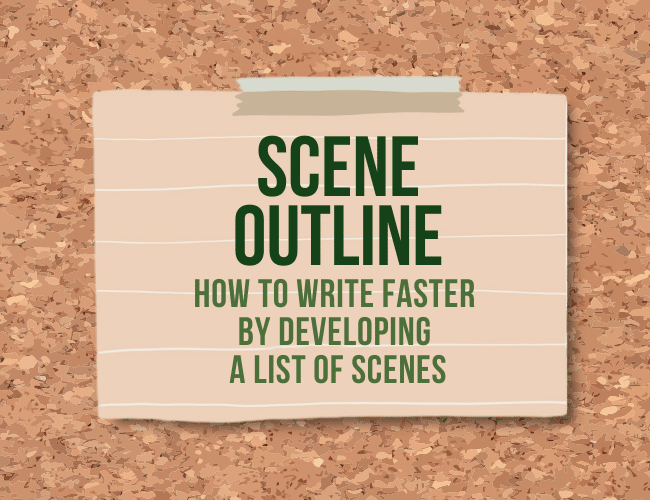
A scene outline can give your story plan focus and prevent burnout or confusion when actually writing your story.
In this article, you'll learn how to create a scene list that gives your big story idea focus, which will help you not only write faster, but give you a higher chance of actually finishing your book—and having fun while you write it!
This article is an excerpt from my new book The Write Fast System , designed to help you write your book faster!
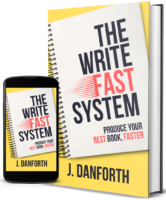
Why This Simple List Quickened My Writing
It’s easy to come up with an overall idea for a book, but to break it down to the actual steps of getting from beginning to end is far more difficult. Suddenly, you’re faced with the prospect of dealing with character development, plot holes, story mechanics, logical sequence of events…the list goes on.
However, creating a scene list need not be difficult. I was once intimidated by this step as well, but once I figured out the basics of how a scene list should be created and used, I found it incredibly useful and helpful in writing my first draft. In fact, having a scene list is the biggest reason that I was able to finish a first draft in six weeks.
I’d like to share with you my personal method for creating and using scene lists and how it can help you finish your first draft quickly and efficiently.
Scene vs. Scene Outline
What is a scene?
A scene can be described as a series of continuous events that take place in a story. A scene is usually a self-contained event, with its own set of elements of plot . Scenes move the story forward one step at a time, and every time a scene ends, your reader should feel like they’ve become more immersed in the story world and more invested in the plot.
But thinking of a book in terms of scenes can feel daunting, especially if you're a pantser instead of a plotter.
However, whether you're screenwriting or writing a manuscript, building an outline of a story's scenes will help you keep track and understand if the main character's arc builds and the main events raise the stakes from beginning to end. Which means a scene list will likely help you avoid major rewrites after your finish writing your book.
What is a scene outline?
A scene outline is a list of scenes that are needed in to story, including the main plotline and subplots. Drafting a manuscript without creating this list will likely slow down your writing process and could end with an incoherent plot.
You might want to consider the scene structure, or breakdown of events in each scene, when you create this list. However, it's most important to know the main elements in each scene, or the overall big idea of why the scene exists.
When to Make a Scene Outline
I see the scene list as the second step in planning. (The first being the five sections I think you need to plan before writing.)
As a quick refresher, I see these story sections divided into the following five parts:
- Beginning to Midpoint
- Midpoint to End
Using the article on this story structure, you may have created a five-part plan in your outlining process.
Once you've done this, you should consider how to list a detailed outline of your scenes—consistent with the number of scenes you want in your book.
The Number of Scenes in a Scene Outline
There is no hard and fast rule for this, and the number of scenes serves as a guideline only. Every book is different. Some may have as few as 10-15 scenes, and some may have hundreds. For commercial fiction, the average often falls somewhere between 30 and 45 total scenes.
I encourage you to have at least 40 scenes outlining your novel. This is a number flexible enough to add or subtract a few from and still be left with a book of decent length.
You can plot these scenes using index cards, or a writing program like Scrivener . You can organize them with scene headings (something relative to the main event that happens in a scene) or not.
Learn how to create a scene list in this article! Tweet this
There are 44 scenes on this list, made using Hiveword . I arranged and rearranged, added and subtracted, until I arrived at this list. It probably looks nice and neat, all lined up. However, anyone who has read the book would laugh at this list.
Because it’s nothing like the final book .
I had major differences, like:
- The character Dixie never made it into the story. Not even the first draft.
- The protagonist’s mom was originally supposed to be alive. She ended up being dead long before the story began.
- The majority of the characters had different names by the second draft, and I frankly can’t remember what two-thirds of these scenes were supposed to be.
Still, having this list was immeasurably helpful. I was able to finish writing the book in six (count em'!) weeks because I never had to wonder about where to take the story next.
No matter how the details changed I knew Astra was headed toward her major mindset change in the middle of the book. I knew who she would bond with among the contestants of the game and what their relationships are like. I knew the secrets behind the man who catches her eye and what important events need to take place for their relationship to develop into something genuine.
In the end, despite the fact that I barely stuck to this list, it kept me focused and on track. I never once had to pause in my writing to figure out where to go next.
Which let me write faster, and with more focus.
Make Your Own Scene Outline!
Making a scene outline will organize your ideas, giving you confidence in your act structure, or how the big ideas build in your book.
While it may seem like making a list of scenes will diminish the fun of creative writing, it probably will actually do the opposite.
Writing a scene outline will help you have fun while writing, because you won't get confused about where your story is going or what your protagonist needs to do in order to get what they want (or not) by the end.
However, you don't need to overdo a scene outline if you don't want to. Keeping in mind the scene structure template shared in the article gives you the focus you really need to write faster with intention.
And if you want to take this a step further, try writing a synopsis before or after writing a scene list. Read it over. Did this make you feel excited about your story?
If it did, you're probably in a good place to write forward. And write faster, while you're at it.
Take fifteen minutes today and start making a scene outline for your story. Start with these scenes in the following five story sections:
- 1 scene for Beginning
- 1-3 scenes for Beginning to Midpoint
- 1 scene for Midpoint
- 1-3 scenes for Midpoint to End
- 1 scene for End
You need not spend more than 3-5 minutes on each scene. A simple paragraph is enough to present a summary of what should happen in the scene. Or, you can answer the questions suggested in there scene structure template in the article.
When you're finished, you will have a strong start to outlining you story's structure—and be on your way to writing your first draft faster.
J. D. Edwin
J. D. Edwin is a daydreamer and writer of fiction both long and short, usually in soft sci-fi or urban fantasy. Sign up for her newsletter for free articles on the writer life and updates on her novel, find her on Facebook and Twitter ( @JDEdwinAuthor ), or read one of her many short stories on Short Fiction Break literary magazine .
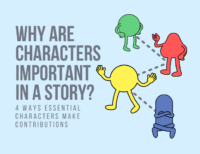
Submit a Comment Cancel reply
Your email address will not be published. Required fields are marked *
Submit Comment
Join over 450,000 readers who are saying YES to practice. You’ll also get a free copy of our eBook 14 Prompts :
Popular Resources
Book Writing Tips & Guides Creativity & Inspiration Tips Writing Prompts Grammar & Vocab Resources Best Book Writing Software ProWritingAid Review Writing Teacher Resources Publisher Rocket Review Scrivener Review Gifts for Writers
Books By Our Writers

You've got it! Just us where to send your guide.
Enter your email to get our free 10-step guide to becoming a writer.
You've got it! Just us where to send your book.
Enter your first name and email to get our free book, 14 Prompts.
Want to Get Published?
Enter your email to get our free interactive checklist to writing and publishing a book.
- Free Taster Sessions
- 11+ Mock Exams
- 11 Plus Booster Courses
- GCSE Maths Booster Courses
- Free Consultation
- Levelled Reading List
- Student Booklist
- Exam Preparation
- One-to-One Tuition
- Free Taster Session in Seven Kings
- Seven Kings Timetables
- Seven Kings Price List
- Free Taster Session in Loughton
- Loughton Timetables
- Loughton Price List
- Free Resources
- Accessories
- Redbridge Publishing
- Our Processes
- Our Mission – to empower children through education
- Testimonials
- Bancroft’s School
- Beths Grammar School
- Bexley Grammar School
- Chigwell School
- Chislehurst and Sidcup Grammar School
- City of London School for Boys
- City of London School for Girls
- Forest School
- Haberdashers’ Boys’ School
- Ilford County High School
- King Edward VI Grammar School
- The Latymer School
- Woodford County High School
- 11+ Booster Courses
How to Structure Creative Writing for GCSE (Creative Writing Examples!)
Posted on August, 2022

Structure Creative Writing for Success
Having plenty of ideas for creative writing is one thing, but nailing down the right structure can be a bit more challenging.
There are several steps for children to think about before they begin writing, and that includes creating a structure or plan for how their story will flow.
Creative writing is all about grabbing the reader’s attention immediately, so children in their GCSE years need to understand the importance of structure when writing, in order to organise their ideas and make sure their work reads cohesively.
In this post, we will go through everything your child needs to know from paragraphing, to creating a satisfying ending, providing examples along the way to demonstrate the best way to structure their creative writing.
How Should I Structure Creative Writing?
There are several types of creative writing questions that could come up on the GCSE reading and writing exam. There will be the option to either write creatively based on an image, or a made-up scenario.
Having a solid structure for longer creative writing questions and exercises helps to ensure your child is prepared.
By using a structure that helps to organise your child’s ideas, it helps their writing to flow. It also allows your child to become more confident in their creative writing process.
Planning is more important than you might think, as mark schemes from most exam boards include ‘well-controlled paragraphs’ or something very similar within the top band of criteria for creative writing.
Therefore, children should practise planning out creative writing structures well before their writing exam. Planning gives them time to get into the habit of always providing themselves with a simple, but focused idea of what they are going to write.
Structure Creative Writing with Seven Story Archetypes
Introduction.
Understanding the fundamental structure of a story is crucial for crafting engaging narratives. Beyond basic sequences, story archetypes provide a deeper framework. Christopher Booker , a renowned scholar, identified seven main story archetypes.
Each archetype outlines a distinctive journey and the challenges faced by characters.
1. Overcoming the Monster
This archetype portrays an underdog’s quest to conquer a formidable evil. Examples include the epic tales of Harry Potter battling Lord Voldemort, the classic struggle in Jurassic Park, and the timeless narrative of Jack and the Beanstalk.
2. Rags to Riches
Embarking from a starting point of poverty or despair, characters rise to newfound wealth and success. Witness this transformation in stories like Slumdog Millionaire, The Pursuit of Happyness, and The Wolf of Wall Street.
3. The Quest
A hero’s journey to discover something, overcoming trials and tribulations along the way. Iconic examples include the Fellowship of the Ring’s quest in The Lord of the Rings, Marlin’s journey to find Nemo, and the epic adventures of Odysseus in The Odyssey.
4. Voyage and Return
Protagonists venture into unknown territories, facing adversity before returning home transformed. Dive into this archetype with examples like the curious escapades in Spirited Away, Bilbo Baggins’ journey in The Hobbit, and the enchanting Chronicles of Narnia.
Contrary to our typical perception of humour, this archetype involves destined lovers kept apart by conflicting forces. Delight in the comedic twists of relationships in classics such as 10 Things I Hate About You, When Harry Met Sally, and Notting Hill.
Protagonists with major flaws or errors leading to their inevitable downfall. Witness the unraveling of characters in tragedies like The Great Gatsby, Requiem for a Dream, and the Shakespearean masterpiece Othello.
Characters succumb to darkness but redeem themselves throughout the narrative. Experience the transformative journeys in stories like Atonement, American History X, and the animated Beauty and the Beast.
Application Across Mediums
Beyond literature, these archetypes seamlessly apply to filmmaking and photography. A well-crafted photograph or film can mirror the same narrative arcs, captivating viewers on a visual adventure akin to storytelling. Explore these archetypes to infuse depth and resonance into your creative endeavors.
Paragraphing for a Solid Creative Writing Structure
First of all, paragraphing is central to creative writing as this is what keeps the structure solid.
In order to stick to a creative writing structure, children must know exactly when to end and start a new paragraph, and how much information each paragraph should contain.
For example, introducing the main character, diving into the action of the story, and providing 10 descriptive sentences of the weather and location, could be separated and spread throughout for impact.
Structuring a creative writing piece also involves creating an appropriate timeline of events. Then, you must map out exactly where the story will go from start to finish. This is assuming the writing piece is in sequential order.
Occasionally, there may be a question that requires a non-sequential order.
Master creative writing with our Ultimate Creative Writing Workout!
http://redbridgetuition.co.uk/product/ultimate-creative-writing-workout/
What does a Solid Creative Writing Structure look like?
This list below details every section in a creative writing piece and should look something like this:
- An engaging opening
- A complication
- The development
- The turning point
- A resolution or convincing close
With this structure, it is important to bear in mind that for the AQA GCSE English Language paper 1 reading and creative writing exam.
You can also use Freitag’s pyramid or a story mountain to help you understand the basic structure of a story:
Children will be expected to spend about 50 minutes on the creative writing section. It’s therefore vital to get them into the habit of planning their writing first. As with anything, practice makes perfect.
If you want to find out more about GCSE English Language papers 1 and 2, check out our blog .
We will dive deeper into the creative writing structure further on in this post, but first, let us go through the importance of paragraphing, and how TipTop paragraphs can help to improve children’s writing.
Paragraphing and TipTop Paragraphs
Before children begin to plan out the structure of their stories, it’s essential that they know the importance of paragraphing correctly first.
At this stage of learning, your child should be comfortable in knowing what a paragraph is, and understand that they help with the layout of their stories throughout the whole writing process.
Paragraphs essentially help to organise ideas into dedicated sections of writing based on your child’s ideas. For example, having a paragraph for an introduction, then another paragraph introducing the main character.
This means your child’s writing will be in a logical order and will direct the reader further on into the writing.
Be as creative as Kevin’s booby traps from “ Home Alone “.
To avoid your child straying from their creative writing structure and overloading paragraphs with too much information, there is a simple way to remind them of when they need to start a new paragraph.
TiPToP for a Clearer Creative Writing Structure
Using the TiPToP acronym is such an easy way for you to encourage your child to think about when they need to change paragraphs, as it stands for:
When moving to a different time or location, bringing in a new idea or character, or even introducing a piece of action or dialogue, your child’s writing should be moving on to new paragraphs.
During creative writing practice, your child can ask themselves a series of questions to work out whether they need to move onto a new paragraph to keep their story flowing and reach that top band of criteria.
For example:
- Is the story going into a new day or time period?
- Is the location staying the same or am I moving on?
- Am I bringing in a new idea that I haven’t described yet?
- Am I going to bring in a new character?
Providing opportunities to practise creative writing will help your child to get into the habit of asking themselves these questions as they write, meaning they will stick to the plan they have created beforehand.
Now it’s time to get into the all-important creative writing structure.
Structure Creative Writing: A Step-by-Step Guide
Producing a creative writing structure should be a simple process for your child, as it just involves organising the different sections of their writing into a logical order.
First, we need to start at the beginning, by creating an engaging opening for any piece of writing that will grab the reader’s attention. You might also be interested to check out this blog on story structure that I found in my research.
This leads us nicely onto step 1…
1. Creating an Engaging Opening
There are several ways to engage the reader in the opening of a story, but there needs to be a specific hook within the first paragraph to ensure the reader continues.
This hook could be the introduction of a word that the reader isn’t familiar with, or an imaginary setting that they don’t recognise at all, leaving them questioning ‘What does this all mean?’
It may be that your child opens their story by introducing a character with a description of their appearance, using a piece of dialogue to create a sense of mystery, or simply describing the surroundings to set the tone. This ‘hook’ is crucial as it sets the pace for the rest of the writing and if done properly, will make the reader feel invested in the story.
Read more about hooks in essays .
If your child needs to work more on description, I definitely recommend utilising the Descriptosaurus :
Additionally, it’s important to include a piece of information or specific object within the opening of the creative writing, as this provides something to link back to at the end, tying the whole storyline together neatly.
Engaging Opening Examples:
- Opening with dialogue – “I wouldn’t tell them, I couldn’t”
- Opening with a question – “Surely they hadn’t witnessed what I had?”
- Opening with mystery/ or a lack of important information – “The mist touched the top of the mountains like a gentle kiss, as Penelope Walker stared out from behind the cold, rigid bars that separated her from the world.”
2. Complication
Providing a complication gets the storyline rolling after introducing a bit of mystery and suspense in the opening.
Treat this complication like a snowball that starts small, but gradually grows into something bigger and bigger as the storyline unfolds.
This complication could be that a secret has been told, and now the main character needs to try and stop it from spreading. Alternatively, you could introduce a love interest that catches the attention of your main character.
In this section, there should be a hint towards a future challenge or a problem to overcome (which will be fleshed out in the development and climax sections) to make the reader slightly aware of what’s to come.
Complication Example:
- Hint to future challenge – “I knew what was coming next, I knew I shouldn’t have told him, now my secret is going to spread like wildfire.”
- Including information to help understand the opening – “Bainbridge Prison was where Penelope had spent the last 2 years, stuffed into a cell the size of a shoebox, waiting for August the 14th to arrive.”
3. Development
The development seamlessly extends from the previous section, providing additional information on the introduced complication.
During this phase, your child should consider the gradual build-up to the writing piece’s climax. For instance, a secret shared in the compilation stage now spreads beyond one person, heightening the challenge of containment.
Here, your child should concentrate on instilling suspense and escalating tension in their creative writing, engaging the reader as they approach the climax.
Development Example:
- Build-up to the challenge/ climax – “I saw him whispering in class today, my lip trembled but I had to force back my tears. What if he was telling them my secret? The secret no-one was meant to know.”
- Focusing on suspense – “4 more days to go. 4 more days until her life changed forever, and she didn’t know yet if it was for better or for worse.”
The climax is the section that the whole story should be built around.
Before creating a structure like this one, your child should have an idea in mind that the story will be based on. Usually this is some sort of shocking, emotion-provoking event.
This may be love, loss, battle, death, a mystery, a crime, or several other events. The climax needs to be the pivotal point; the most exciting part of the story.
Your child may choose to have something go drastically wrong for their main character. They must regardless, need to come up with a way of working this problem into their turning point and resolution. The should think carefully about this will allow the story to be resolved and come to a close.
Climax Example:
- Shocking event: “He stood up and spoke the words I never want to hear aloud. ‘I saw her standing there over the computer and pressing send, she must have done it.’”
- Emotion-provoking event: “The prisoners cheered as Penelope strutted past each cell waving goodbye, but suddenly she felt herself being pulled back into her cell. All she could see were the prison bars once again.”
5. Turning Point or Exposition
After the climax, the story’s turning point emerges, crucial for maintaining reader interest.
During this post-climax phase, address and resolve issues, acknowledging that not every resolution leads to a happy ending.
Turning points need not be confined to the story’s conclusion; they can occur at various junctures, signifying significant narrative shifts.
Even in shorter pieces, introducing turning points early on can captivate the reader.
Creative writing allows for individual storytelling, and effective turning points may differ between your child and you.
Maintain suspense in this section, avoiding premature revelation of the ending despite the climax’s conclusion.
Turning Point Example:
- Turning point: “Little did they know, I was stopping that file from being sent around the whole school. I wasn’t the one to send it, and I had to make sure they knew that.”
- Turning point: “She forced herself through the window, leaving the prison behind her for good this time, or so she thought.”
6. A Resolution or Convincing Close
The resolution should highlight the change in the story, so the tone must be slightly different.
At this stage, the problem resolves (happily or unhappily) and the character/s learns lessons. The close of the story must highlight this.
The writer should also not rush the resolution or end of the story.
It needs to be believable for the reader right until the very end. The writer should allow us to feel what the protagonist is feeling.
This creates emotion and allows your reader to feel fully involved.
Remember the piece of information or specific object that was included in the story’s opening?
Well this is the time to bring that back, and tie all of those loose ends together. You want to leave the reader with something to think about. You can even ask questions as this shows they have invested in the story.
Resolution Example:
- Happy resolution: “He came up to me and curled his hand around mine, and whispered an apology. He knew it wasn’t me, and all I felt was relief. Looks like I should have told them right from the start”
- Unhappy resolution: “All she felt was separation, as she felt those cold, rigid prison bars on her face once more.”
How to Structure Your Creative Writing for GCSE (with Creative Writing Examples!)
To enhance your children’s GCSE creative writing skills, allocate time for practice.
Plan a structure for creative writing to guide children in organising their thoughts and managing time during the GCSE exam.
Apply this structure to various exam questions, such as short stories or describing events.
Focus each creative piece on a climactic event, building anticipation in the beginning and resolving it at the end.
Consider a tutor for GCSE preparation to help children focus on specific areas.
Redbridge Tuition offers experienced tutors for learning from KS2 to GCSE, providing necessary resources for your child’s success.
Get in touch to find out how our tutors could help.
Want a free consultation?
Why not share this post, what our parents and children say.
Just want to use this opportunity to extend my gratitude to Mrs Rupa and the Redbridge Tuition team for the work done with my daughter.…
My daughter has been coming here for 3 weeks now for Key Stage 4 GCSE Maths. All the staff are really friendly and informative and…
Never in a million years did we ever think Mollie would ever achieve one of the ‘top Academic Scholarship Award’ at one of our two chosen…
Just a quick email to say a huge thank you and to show our appreciation for your excellent tuition and the tailored support that you…
Nadein Grey
Thanks to you and your tutors for the confidence you instilled in my daughter to believe in herself. Her maths has improved so much that…
Silo Endeley
My daughter started her 11 plus prep with Redbridge Tuition exactly 1 year prior to the exams. I just wanted to convey my thanks and…
They are a very resourceful team, who structure the activities very carefully and execute it to perfection…
K. S. Kumar
I was over the moon when Nayla’s results arrived as she has managed to secure a place at Woodford County High School. It was no…
Neepa Chowdhury
Thanks for the support given to Konrad last year. He passed his Kent exams with 400 points and his Medway exam with 630 points. He…

The Art of Writing: Why It’s Important
Introduction This article will reveal why writing is still an important skill for anyone to improve and master. The Importance of Basic Writing Skills Acquiring…

7 Best Maths Resources for Secondary Students
Introduction This blog delves into the seven indispensable resources tailored for secondary students, encompassing both free and paid options that can significantly enhance a student’s…

36 Best Riddles for Kids and Adults (With Answers)
Best Challenging Riddles Riddles are a brilliant way to help children develop their critical thinking skills and creativity. So here are the best challenging…
Spring Sale: Get 15% off selected writing courses, only through April 19! Learn more »

The short story is a fiction writer’s laboratory: here is where you can experiment with characters, plots, and ideas without the heavy lifting of writing a novel. Learning how to write a short story is essential to mastering the art of storytelling . With far fewer words to worry about, storytellers can make many more mistakes—and strokes of genius!—through experimentation and the fun of fiction writing.
Nonetheless, the art of writing short stories is not easy to master. How do you tell a complete story in so few words? What does a story need to have in order to be successful? Whether you’re struggling with how to write a short story outline, or how to fully develop a character in so few words, this guide is your starting point.
Famous authors like Virginia Woolf, Haruki Murakami, and Agatha Christie have used the short story form to play with ideas before turning those stories into novels. Whether you want to master the elements of fiction, experiment with novel ideas, or simply have fun with storytelling, here’s everything you need on how to write a short story step by step.
The Core Elements of a Short Story
There’s no secret formula to writing a short story. However, a good short story will have most or all of the following elements:
- A protagonist with a certain desire or need. It is essential for the protagonist to want something they don’t have, otherwise they will not drive the story forward.
- A clear dilemma. We don’t need much backstory to see how the dilemma started; we’re primarily concerned with how the protagonist resolves it.
- A decision. What does the protagonist do to resolve their dilemma?
- A climax. In Freytag’s Pyramid , the climax of a story is when the tension reaches its peak, and the reader discovers the outcome of the protagonist’s decision(s).
- An outcome. How does the climax change the protagonist? Are they a different person? Do they have a different philosophy or outlook on life?
Of course, short stories also utilize the elements of fiction , such as a setting , plot , and point of view . It helps to study these elements and to understand their intricacies. But, when it comes to laying down the skeleton of a short story, the above elements are what you need to get started.
Note: a short story rarely, if ever, has subplots. The focus should be entirely on a single, central storyline. Subplots will either pull focus away from the main story, or else push the story into the territory of novellas and novels.
The shorter the story is, the fewer of these elements are essentials. If you’re interested in writing short-short stories, check out our guide on how to write flash fiction .
How to Write a Short Story Outline
Some writers are “pantsers”—they “write by the seat of their pants,” making things up on the go with little more than an idea for a story. Other writers are “plotters,” meaning they decide the story’s structure in advance of writing it.
You don’t need a short story outline to write a good short story. But, if you’d like to give yourself some scaffolding before putting words on the page, this article answers the question of how to write a short story outline:
https://writers.com/how-to-write-a-story-outline
How to Write a Short Story Step by Step
There are many ways to approach the short story craft, but this method is tried-and-tested for writers of all levels. Here’s how to write a short story step by step.
1. Start With an Idea
Often, generating an idea is the hardest part. You want to write, but what will you write about?
What’s more, it’s easy to start coming up with ideas and then dismissing them. You want to tell an authentic, original story, but everything you come up with has already been written, it seems.
Here are a few tips:
- Originality presents itself in your storytelling, not in your ideas. For example, the premise of both Shakespeare’s A Midsummer Night’s Dream and Ostrovsky’s The Snow Maiden are very similar: two men and two women, in intertwining love triangles, sort out their feelings for each other amidst mischievous forest spirits, love potions, and friendship drama. The way each story is written makes them very distinct from one another, to the point where, unless it’s pointed out to you, you might not even notice the similarities.
- An idea is not a final draft. You will find that exploring the possibilities of your story will generate something far different than the idea you started out with. This is a good thing—it means you made the story your own!
- Experiment with genres and tropes. Even if you want to write literary fiction , pay attention to the narrative structures that drive genre stories, and practice your storytelling using those structures. Again, you will naturally make the story your own simply by playing with ideas.
If you’re struggling simply to find ideas, try out this prompt generator , or pull prompts from this Twitter .
2. Outline, OR Conceive Your Characters
If you plan to outline, do so once you’ve generated an idea. You can learn about how to write a short story outline earlier in this article.
If you don’t plan to outline, you should at least start with a character or characters. Certainly, you need a protagonist, but you should also think about any characters that aid or inhibit your protagonist’s journey.
When thinking about character development, ask the following questions:
- What is my character’s background? Where do they come from, how did they get here, where do they want to be?
- What does your character desire the most? This can be both material or conceptual, like “fitting in” or “being loved.”
- What is your character’s fatal flaw? In other words, what limitation prevents the protagonist from achieving their desire? Often, this flaw is a blind spot that directly counters their desire. For example, self hatred stands in the way of a protagonist searching for love.
- How does your character think and speak? Think of examples, both fictional and in the real world, who might resemble your character.
In short stories, there are rarely more characters than a protagonist, an antagonist (if relevant), and a small group of supporting characters. The more characters you include, the longer your story will be. Focus on making only one or two characters complex: it is absolutely okay to have the rest of the cast be flat characters that move the story along.
Learn more about character development here:
https://writers.com/character-development-definition
3. Write Scenes Around Conflict
Once you have an outline or some characters, start building scenes around conflict. Every part of your story, including the opening sentence, should in some way relate to the protagonist’s conflict.
Conflict is the lifeblood of storytelling: without it, the reader doesn’t have a clear reason to keep reading. Loveable characters are not enough, as the story has to give the reader something to root for.
Take, for example, Edgar Allan Poe’s classic short story The Cask of Amontillado . We start at the conflict: the narrator has been slighted by Fortunato, and plans to exact revenge. Every scene in the story builds tension and follows the protagonist as he exacts this revenge.
In your story, start writing scenes around conflict, and make sure each paragraph and piece of dialogue relates, in some way, to your protagonist’s unmet desires.
4. Write Your First Draft
The scenes you build around conflict will eventually be stitched into a complete story. Make sure as the story progresses that each scene heightens the story’s tension, and that this tension remains unbroken until the climax resolves whether or not your protagonist meets their desires.
Don’t stress too hard on writing a perfect story. Rather, take Anne Lamott’s advice, and “write a shitty first draft.” The goal is not to pen a complete story at first draft; rather, it’s to set ideas down on paper. You are simply, as Shannon Hale suggests, “shoveling sand into a box so that later [you] can build castles.”
5. Step Away, Breathe, Revise
Whenever Stephen King finishes a novel, he puts it in a drawer and doesn’t think about it for 6 weeks. With short stories, you probably don’t need to take as long of a break. But, the idea itself is true: when you’ve finished your first draft, set it aside for a while. Let yourself come back to the story with fresh eyes, so that you can confidently revise, revise, revise .
In revision, you want to make sure each word has an essential place in the story, that each scene ramps up tension, and that each character is clearly defined. The culmination of these elements allows a story to explore complex themes and ideas, giving the reader something to think about after the story has ended.
6. Compare Against Our Short Story Checklist
Does your story have everything it needs to succeed? Compare it against this short story checklist, as written by our instructor Rosemary Tantra Bensko.
Below is a collection of practical short story writing tips by Writers.com instructor Rosemary Tantra Bensko . Each paragraph is its own checklist item: a core element of short story writing advice to follow unless you have clear reasons to the contrary. We hope it’s a helpful resource in your own writing.
Update 9/1/2020: We’ve now made a summary of Rosemary’s short story checklist available as a PDF download . Enjoy!
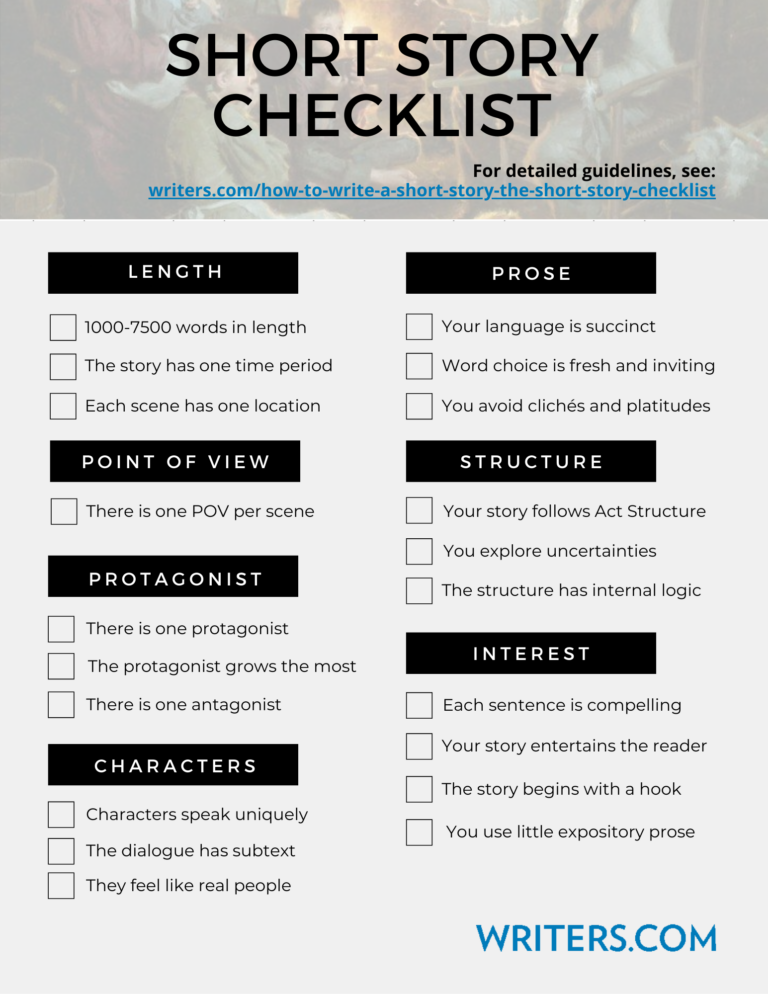
Click to download
How to Write a Short Story: Length and Setting
Your short story is 1000 to 7500 words in length.
The story takes place in one time period, not spread out or with gaps other than to drive someplace, sleep, etc. If there are those gaps, there is a space between the paragraphs, the new paragraph beginning flush left, to indicate a new scene.
Each scene takes place in one location, or in continual transit, such as driving a truck or flying in a plane.
How to Write a Short Story: Point of View
Unless it’s a very lengthy Romance story, in which there may be two Point of View (POV) characters, there is one POV character. If we are told what any character secretly thinks, it will only be the POV character. The degree to which we are privy to the unexpressed thoughts, memories and hopes of the POV character remains consistent throughout the story.
You avoid head-hopping by only having one POV character per scene, even in a Romance. You avoid straying into even brief moments of telling us what other characters think other than the POV character. You use words like “apparently,” “obviously,” or “supposedly” to suggest how non-POV-characters think rather than stating it.
How to Write a Short Story: Protagonist, Antagonist, Motivation
Your short story has one clear protagonist who is usually the character changing most.
Your story has a clear antagonist, who generally makes the protagonist change by thwarting his goals.
(Possible exception to the two short story writing tips above: In some types of Mystery and Action stories, particularly in a series, etc., the protagonist doesn’t necessarily grow personally, but instead his change relates to understanding the antagonist enough to arrest or kill him.)
The protagonist changes with an Arc arising out of how he is stuck in his Flaw at the beginning of the story, which makes the reader bond with him as a human, and feel the pain of his problems he causes himself. (Or if it’s the non-personal growth type plot: he’s presented at the beginning of the story with a high-stakes problem that requires him to prevent or punish a crime.)
The protagonist usually is shown to Want something, because that’s what people normally do, defining their personalities and behavior patterns, pushing them onward from day to day. This may be obvious from the beginning of the story, though it may not become heightened until the Inciting Incident , which happens near the beginning of Act 1. The Want is usually something the reader sort of wants the character to succeed in, while at the same time, knows the Want is not in his authentic best interests. This mixed feeling in the reader creates tension.
The protagonist is usually shown to Need something valid and beneficial, but at first, he doesn’t recognize it, admit it, honor it, integrate it with his Want, or let the Want go so he can achieve the Need instead. Ideally, the Want and Need can be combined in a satisfying way toward the end for the sake of continuity of forward momentum of victoriously achieving the goals set out from the beginning. It’s the encounters with the antagonist that forcibly teach the protagonist to prioritize his Needs correctly and overcome his Flaw so he can defeat the obstacles put in his path.
The protagonist in a personal growth plot needs to change his Flaw/Want but like most people, doesn’t automatically do that when faced with the problem. He tries the easy way, which doesn’t work. Only when the Crisis takes him to a low point does he boldly change enough to become victorious over himself and the external situation. What he learns becomes the Theme.
Each scene shows its main character’s goal at its beginning, which aligns in a significant way with the protagonist’s overall goal for the story. The scene has a “charge,” showing either progress toward the goal or regression away from the goal by the ending. Most scenes end with a negative charge, because a story is about not obtaining one’s goals easily, until the end, in which the scene/s end with a positive charge.
The protagonist’s goal of the story becomes triggered until the Inciting Incident near the beginning, when something happens to shake up his life. This is the only major thing in the story that is allowed to be a random event that occurs to him.
How to Write a Short Story: Characters
Your characters speak differently from one another, and their dialogue suggests subtext, what they are really thinking but not saying: subtle passive-aggressive jibes, their underlying emotions, etc.
Your characters are not illustrative of ideas and beliefs you are pushing for, but come across as real people.
How to Write a Short Story: Prose
Your language is succinct, fresh and exciting, specific, colorful, avoiding clichés and platitudes. Sentence structures vary. In Genre stories, the language is simple, the symbolism is direct, and words are well-known, and sentences are relatively short. In Literary stories, you are freer to use more sophisticated ideas, words, sentence structures and underlying metaphors and implied motifs.
How to Write a Short Story: Story Structure
Your plot elements occur in the proper places according to classical Act Structure so the reader feels he has vicariously gone through a harrowing trial with the protagonist and won, raising his sense of hope and possibility. Literary short stories may be more subtle, with lower stakes, experimenting beyond classical structures like the Hero’s Journey. They can be more like vignettes sometimes, or even slice-of-life, though these types are hard to place in publications.
In Genre stories, all the questions are answered, threads are tied up, problems are solved, though the results of carnage may be spread over the landscape. In Literary short stories, you are free to explore uncertainty, ambiguity, and inchoate, realistic endings that suggest multiple interpretations, and unresolved issues.
Some Literary stories may be nonrealistic, such as with Surrealism, Absurdism, New Wave Fabulism, Weird and Magical Realism . If this is what you write, they still need their own internal logic and they should not be bewildering as to the what the reader is meant to experience, whether it’s a nuanced, unnameable mood or a trip into the subconscious.
Literary stories may also go beyond any label other than Experimental. For example, a story could be a list of To Do items on a paper held by a magnet to a refrigerator for the housemate to read. The person writing the list may grow more passive-aggressive and manipulative as the list grows, and we learn about the relationship between the housemates through the implied threats and cajoling.
How to Write a Short Story: Capturing Reader Interest
Your short story is suspenseful, meaning readers hope the protagonist will achieve his best goal, his Need, by the Climax battle against the antagonist.
Your story entertains. This is especially necessary for Genre short stories.
The story captivates readers at the very beginning with a Hook, which can be a puzzling mystery to solve, an amazing character’s or narrator’s Voice, an astounding location, humor, a startling image, or a world the reader wants to become immersed in.
Expository prose (telling, like an essay) takes up very, very little space in your short story, and it does not appear near the beginning. The story is in Narrative format instead, in which one action follows the next. You’ve removed every unnecessary instance of Expository prose and replaced it with showing Narrative. Distancing words like “used to,” “he would often,” “over the years, he,” “each morning, he” indicate that you are reporting on a lengthy time period, summing it up, rather than sticking to Narrative format, in which immediacy makes the story engaging.
You’ve earned the right to include Expository Backstory by making the reader yearn for knowing what happened in the past to solve a mystery. This can’t possibly happen at the beginning, obviously. Expository Backstory does not take place in the first pages of your story.
Your reader cares what happens and there are high stakes (especially important in Genre stories). Your reader worries until the end, when the protagonist survives, succeeds in his quest to help the community, gets the girl, solves or prevents the crime, achieves new scientific developments, takes over rule of his realm, etc.
Every sentence is compelling enough to urge the reader to read the next one—because he really, really wants to—instead of doing something else he could be doing. Your story is not going to be assigned to people to analyze in school like the ones you studied, so you have found a way from the beginning to intrigue strangers to want to spend their time with your words.
Where to Read and Submit Short Stories
Whether you’re looking for inspiration or want to publish your own stories, you’ll find great literary journals for writers of all backgrounds at this article:
https://writers.com/short-story-submissions
Learn How to Write a Short Story at Writers.com
The short story takes an hour to learn and a lifetime to master. Learn how to write a short story with Writers.com. Our upcoming fiction courses will give you the ropes to tell authentic, original short stories that captivate and entrance your readers.
Rosemary – Is there any chance you could add a little something to your checklist? I’d love to know the best places to submit our short stories for publication. Thanks so much.
Hi, Kim Hanson,
Some good places to find publications specific to your story are NewPages, Poets and Writers, Duotrope, and The Submission Grinder.
“ In Genre stories, all the questions are answered, threads are tied up, problems are solved, though the results of carnage may be spread over the landscape.”
Not just no but NO.
See for example the work of MacArthur Fellow Kelly Link.
[…] How to Write a Short Story: The Short Story Checklist […]
Thank you for these directions and tips. It’s very encouraging to someone like me, just NOW taking up writing.
[…] Writers.com. A great intro to writing. https://writers.com/how-to-write-a-short-story […]
Hello: I started to write seriously in the late 70’s. I loved to write in High School in the early 60’s but life got in the way. Around the 00’s many of the obstacles disappeared. Since then I have been writing more, and some of my work was vanilla transgender stories. Here in 2024 transgender stories have become tiresome because I really don’t have much in common with that mind set.
The glare of an editor that could potentially pay me is quite daunting, so I would like to start out unpaid to see where that goes. I am not sure if a writer’s agent would be a good fit for me. My work life was in the Trades, not as some sort of Academic. That alone causes timidity, but I did read about a fiction writer who had been a house painter.
This is my first effort to publish since the late 70’s. My pseudonym would perhaps include Ahabidah.
Gwen Boucher.
Leave a Comment Cancel Reply
Save my name, email, and website in this browser for the next time I comment.

How to Plan a Short Story: Free Story Planner Template
Share this post!
Short stories have a lot of work to do. They have to convey vivid details about setting and characters while advancing a cohesive plot in a limited amount of space. Using a story planner template is an effective way to ensure a positive short story writing experience for both new writers and established ones alike.
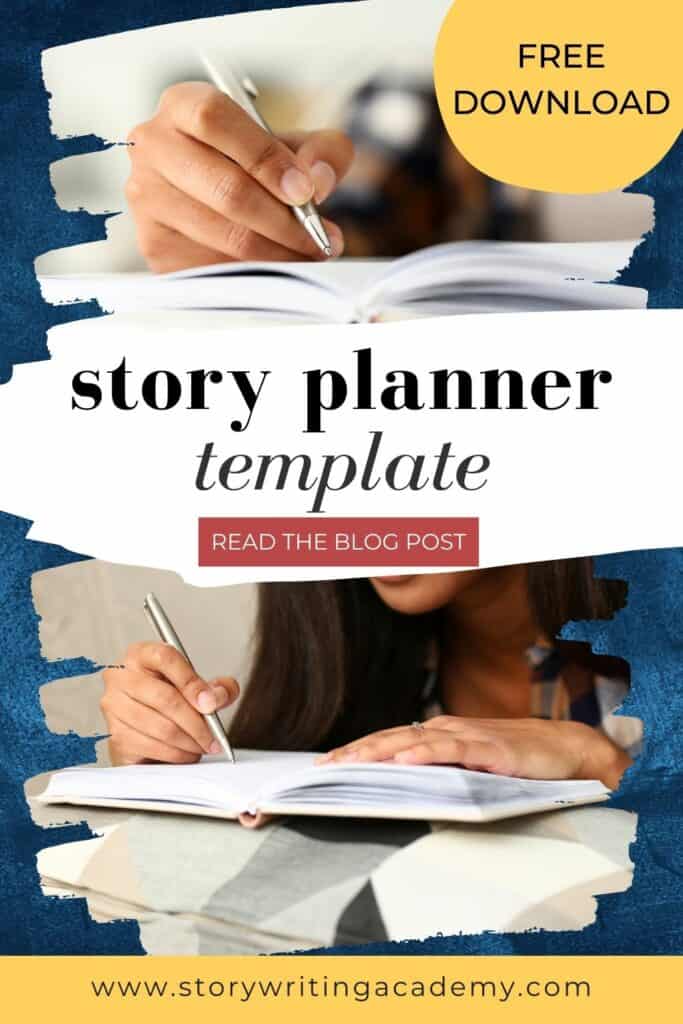
The Benefits of a Story Planner Template
As a child, I was obsessed with writing. I carried notebooks everywhere I went and wrote short stories (and long ones!) in them whenever I could.
The only problem was that my stories never really went anywhere. I mean, physically, they did. I traveled up and down the Pacific Northwest coast with my dad and my stories made some epic journeys.
But the plots always got stuck. I was really good at getting my characters into bad situations, but not so good at bringing them back out again.
Most of my stories just faded out somewhere in the middle. If they had an end, it was usually something like, “Suddenly, I woke up and realized it was all a dream.” Blech. It got to the point where I stopped writing for several years because I was afraid to tackle endings.
That’s why, when my kids developed a passion for writing short stories, I worked on strategies to help them plan out their stories from the beginning. For every short story assignment or passion project they do, we sit down together and use a story planner template to develop a backbone for their work.
The result is amazing: they are now adept at generating ideas, developing well-rounded characters, describing the setting, and planning out a plot with lots of twists and a satisfying resolution. I have to tell you, it’s quite hilarious when your child starts pointing out the emotional wounds of fictional characters and the universal life lessons that will help them overcome those wounds.
I write all my own stories this way too, from flash fiction to novels. I always need to know where they’re going. But whether you’re a go-with-the-flow kind of writer or a die-hard planner, there are things you need to know about your story before you start writing if you want to keep moving in the right direction.
In this post, we’ll look at how using a story planner template can lead to better short stories, and I’ll give you a free download you can use on your own or with students you teach.
Why Writers Need a Story Planner
A story planner is an essential tool for helping writers organize their thoughts and ideas, create an outline for their story so they can avoid problems later on, and develop a visual roadmap for the writing journey that lays ahead of them.
It Helps Organize Thoughts and Ideas
When a new story idea strikes, a lot of information can come with it. This can be overwhelming if you don’t have a way to organize your racing thoughts.
Conversely, a creative writing assignment might inspire no ideas whatsoever. You might stare at a blank page for an hour trying to come up with a single good idea.
Either way, a story plan helps establish a strong foundation for a good plot. For those with too many ideas, the story planner will help them narrow their ideas down and sort them into different buckets. It will also ensure they don’t lose any of their valuable story ideas.
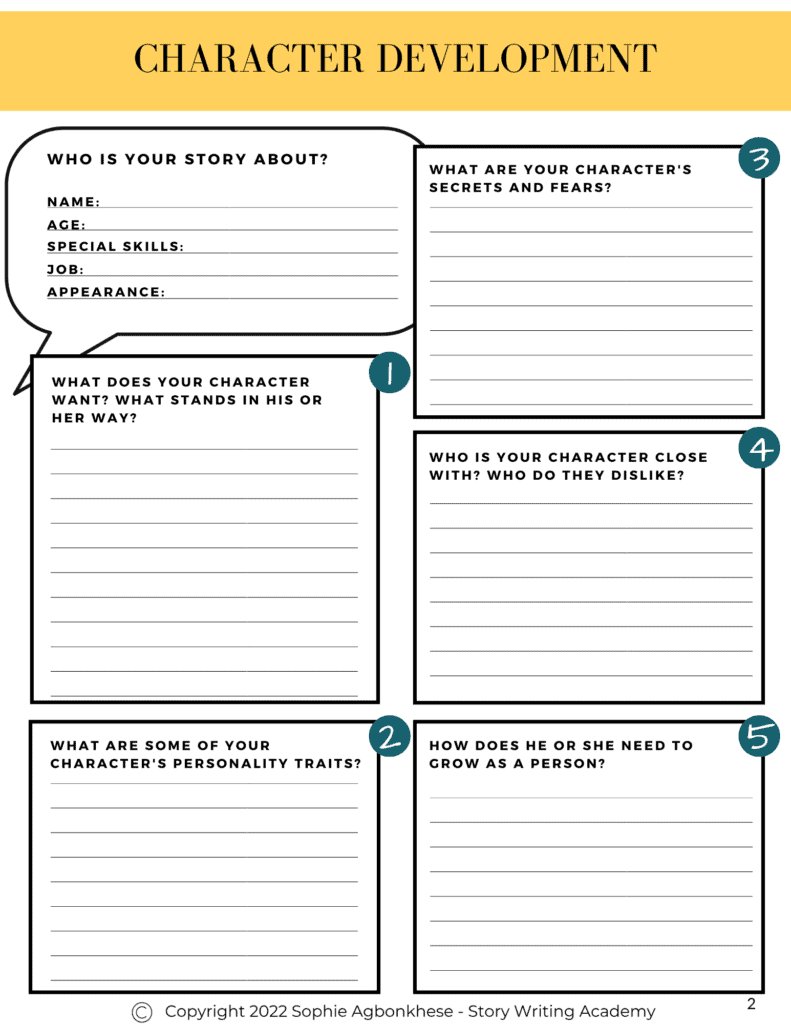
For those who are struggling, the probing questions found in a story planner can effectively elicit new thoughts.
Not every story starts with the same elements. Sometimes, a short story might be born of a “What if’ question . For example, “What if you found a secret passage in your house that led to a different period in time?” These stories start with a premise and expand from there.
Another story might start with a character idea. For example, my daughter wrote a story about a girl who was raised as a dragon slayer only to find out she was actually a dragon halfling. An interesting character provides many opportunities to craft a strong short story premise.
Because the short story planner is flexible in its use, writers of all ages can start wherever they feel comfortable. You may have an idea for a character, or you may have a really neat setting in mind. Either way, story planners are useful tools for bringing these creative ideas together.
Creating an Outline Helps Avoid Problems Later On
Even the most experienced writers can get bogged down in the details of their stories. It can be hard to keep track of information that you wrote or planned out several pages or chapters ago.
Also, sometimes when you write by the seat of your pants without a plan, you can write yourself into a corner from which you can’t retreat. When that happens, you may have to rewrite large sections of the story or even start over from scratch.
A basic planner helps you avoid this problem because you work out the major problems in advance.
For example, I was recently writing a story in which the main character’s husband needed to go away for a long time. It wasn’t so much that he needed to go away, but that I needed the main character to be left on her own.
My initial plan was to send him off to take care of a sick relative but I couldn’t make it completely believable that his wife wouldn’t have gone with him. As I wrote this version of events in my planner, I came to see that I needed a different excuse to send him away, one that would prohibit his wife from joining him. I was able to come up with a plausible alternative before I ever put pen to paper.
Figuring this out in the planning stage saved me from spending hours writing scenes that just wouldn’t have worked in a final draft, and helped put me on a better path from page one.
It Provides a Visual Roadmap of the Story
Writing a story is a journey in the truest sense of the word, and like every journey, it really helps to have a map. Knowing where you’re going and the path you’re planning to take to get there frees you up from having to figure out such things on the fly and allows your creative brain to just run wild with wonderful writing ideas .
You want to equip kids to avoid the nitty-gritty work of trying to map out the story as they go. Once they have more experience as writers, they might be able to do this more readily but at the beginning, you really want to help them come up with a plan so that they don’t get stuck and frustrated.
What Short Story Elements Should Your Story Planner Cover?
A story planner should cover all the important details a writer needs to consider when planning out their story. The amount of detail included will vary depending on a number of factors—how much of a plotter the writer is, how long and/or complex the story is, and how detailed the narrative needs to be.
In general, these are some of the elements a good story planner might cover.
Plot Development in a Story Planner
At a minimum, the story planner template should have an overview of the main plot points: What is going to happen in the story? This would include things like:
- The exposition (or opening image) . How will we show what the character’s life is like at the beginning of the story?
- Catalyst (or inciting incident) . What major event happens to the protagonist that sets things in motion?
- Rising action. How will we show the way tension and suspense build after the catalyst happens?
- Climax . What will the height of the action be? How will the protagonist solve the problem?
- Falling action . How will all the conflict that has arisen over the course of the story get resolved?
- Resolution (or closing image) . What does the protagonist’s life look like after the events of the story take place? How has he or she grown as a person?
Not every short story will have all these elements in the same way that a novel would. For example, many short stories don’t start with exposition but with the catalyst. Likewise, resolutions are often much less, well, resolute in short stories than they are in novels. Nonetheless, even if a short story is going to truncate the plot outline, it’s still important to think about where is the best place to start and finish and what’s going to happen in between.
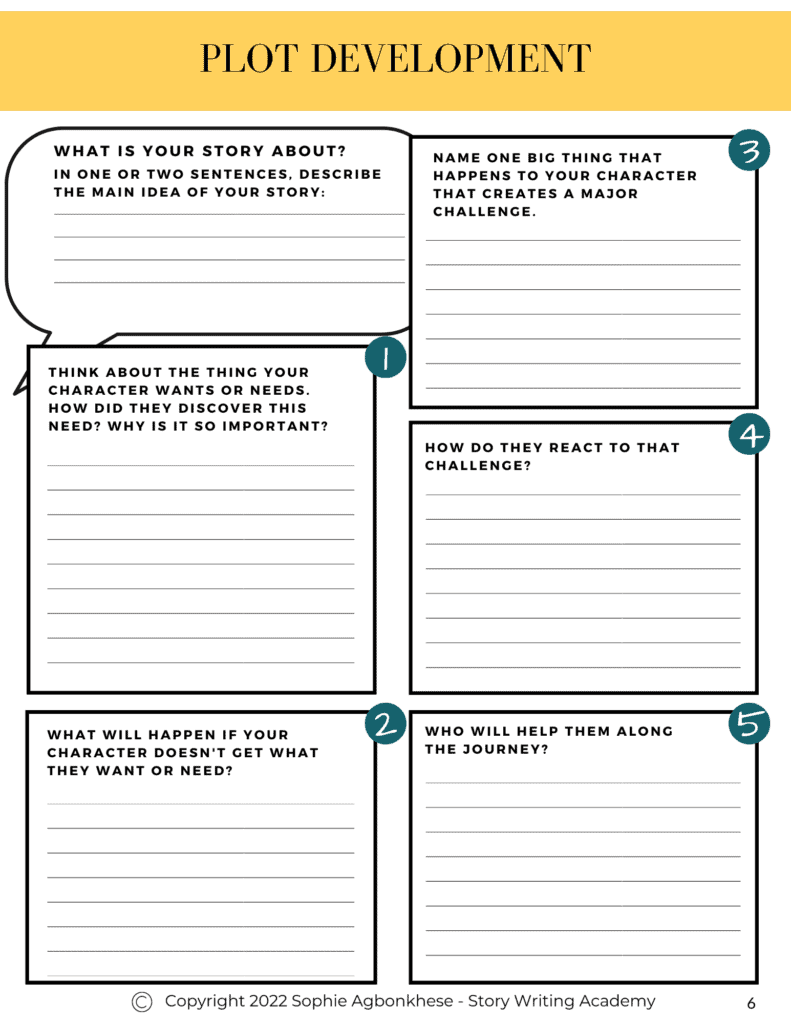
Character Development in the Story Planner
The next thing a story planner should look at is character development, which, in many cases, will be the heart of the story. As you plan your own story, you might create character profiles or character sketches by thinking about questions such as:
- Who is this story about?
- What kind of person are they? Is the protagonist a girl? a boy? a man or woman? a rabbit or a horse? an alien?
- How old are they?
- What kind of job do they have or are they in school?
- What do they look like and how do they dress?
- What are their personality traits?
But more importantly, of course, are the things going on inside of them.
- What do they want?
- What do they need?
- What are they afraid of?
- What are their secrets?
- Who are their friends?
- Who are their enemies?
And of course, we want to know what is standing in the way of them getting what they want, and the story planner template will help develop all of these aspects of the character.
A helpful writing process used by many successful writers is to map out character arcs showing who the character is at the beginning of the story and how they evolve or change as the story progresses.
Setting in the Story Planner
Another thing to consider before writing is the setting of the story. Where does it take place? On a farm? City? Another planet? The bottom of the sea?
When does it take place? Does it take place in current times? Sometime in the past? Does it take place in the future or in a parallel universe? All of these details are going to have a huge impact on what the story looks like.
Think about the details of those settings. What specific locales are going to come up in the story and how will you describe them? What do they look like? What do they sound like? What do they smell like?
The time period will also affect the setting. If it takes place in the past, how did they dress? How did they act? What kinds of laws or rules were they subjected to that differ from what we experience today?
Again, many of these details apply more to older children or students than they do to emerging writers, but it’s never too early to start discussing the basics of story elements.
How to Use a Story Planner
When you use a story planner template, such as the one at the bottom of this post, you decide how much detail you want to include for each of your writing projects.
In Your Own Projects
Maybe you want to go through all of it, or you may use specific pages or steps in the process. Consider your focus: what are you trying to get out of this assignment? Which elements of the story planner will best support you in that goal?
As a Teacher
If you’re teaching the elements of story to your students, you can also use the story planner as a companion tool. So, for example, you might create a long-term writing project wherein the students complete each page of the story planner after you’ve taught a specific topic.
While younger students—those in grades 3 to 5, say—will likely need a lot of support as they work through a story planner, middle school and high school students who have received instruction on the story elements will need less. You may want to go through the story planner once together as an example and then let them give it a go on their own and see what they come up with.
However you decide to use it, on your own or in the classroom, a story planner template will bring together all the pieces of the story so you can focus on unleashing creativity and developing the best stories possible.

Sign Up for Your FREE Story Planner Template
You have successfully joined our subscriber list.
Privacy Overview

IMAGES
VIDEO
COMMENTS
Eleven templates to start your next creative writing project. As writer Margaret Atwood put it, "If I waited for perfection, I would never write a word." Whether you are feeling stuck starring at a blank page or overwhelmed by hundreds of notes, this collection features novel plans, story maps, and character profiles to serve as your writing ...
Free Download: Three-Act Structure Template. Effortlessly plot your story with our customizable template. Enter your email, and we'll send it to you right away. By dissecting the story in three parts of equal importance, you'll be able to create a strong narrative that keeps readers hooked from start to finish.
8 Plot Outline Templates - Free Downloadable PDFs. The plot structures below are available as free downloadable PDFs, but there is a better way to use them. They are all fully integrated into the Novel Factory novel writing software. There, you can select a template from the dropdown menu and begin writing within the software.
1. Story premise worksheet. Your premise is the foundation on which the entire novel is built. With this step-by-step guide, you'll think about who your protagonist is, what they want, and the problems or conflicts they must overcome. The end product is a concise, two-sentence explanation of what your story is about.
Following the old adage that "every story has a beginning, middle, and end," this popular structure splits a story's components into three distinct acts: Setup, Confrontation, and Resolution. In many ways, the three-act structure reworks The Hero's Journey, with slightly less exciting labels. Structure. Act 1: Setup. Exposition. The ...
Scrivener file. If you want access, you can sign up for my free course on writing here. There's also a detailed video walkthrough of the whole thing, as well as a discussion of how my template stands out from other similar book plotting structures. Watch the video. How to use this template: simply use this structure as a guide to plot your ...
Advanced creative writing tips. This writing template is a good start but it isn't everything; you also need to create suspense and conflict in your book to keep readers turning pages. I wrote a book with advance writing tips, sharing everything I know about writing books that sell (I've sold about 50,000 so far). But it's a bit tedious ...
Easy A-B-C steps to help plan story structure. Save, edit and export your plans. Try popular planning methods like the "Snowflake Method" and "The Hero's Journey". Keep all your ideas saved in one place. Add to and develop them when inspiration strikes. Try Story Planner Novel Launcher to take you from idea to a book outline in 6 simple ...
The three-act structure is a classic creative technique used in film and literature since the time of Aristotle. It helps you plan your story at a high level in three parts (acts), often called the Setup, the Confrontation, and the Resolution. This template gives you the building blocks to map out your structure in as much detail as you need.
In this post, I'll share the key steps I've found most useful for outlining novels before writing the first draft. How to outline a novel: 1. Choose your main character. 2. Give your main character a big problem. 3.
2. Make writing a habit. Try to find a specific day or time of day when you are usually free to write, and promise yourself you will sit down and write on a regular schedule. You might plan to write for two hours every day, or to complete a minimum number of words by Saturday afternoon.
Story Mapping Boxes Worksheet. This handy worksheet provides another useful creative writing structure template for young writers to use. It allows children to plan out a story that's laid out into five key stages: the beginning, the build-up, the problem, the resolution and finally the ending. 10) Sequencing Template.
The four core elements are: 1. Establish. The first element in a scene introduces key aspects of the scene's setting, characters, and significant objects. Its purpose is to introduce readers to the scene and help them understand the who, where, and when before the action begins.
1. Start Simplistic. To give your short story outline a good structure, you have to start from the bones. You can utilize a technique called the Snowflake Method. Using this method of writing, a wordsmith begins with a simplistic deep theme and gradually adds meat to the story, making it more complex over time.
A scene outline is a list of scenes that are needed in to story, including the main plotline and subplots. Drafting a manuscript without creating this list will likely slow down your writing process and could end with an incoherent plot. You might want to consider the scene structure, or breakdown of events in each scene, when you create this list.
To enhance your children's GCSE creative writing skills, allocate time for practice. Plan a structure for creative writing to guide children in organising their thoughts and managing time during the GCSE exam. Apply this structure to various exam questions, such as short stories or describing events.
Probably one of the easiest type of poem to start with, the only rule is that each line must start with a letter that, when looking diagonally, spells a word. The amount of lines depends on the length of the word, and there aren't any rules on line length or rhyming. These are great to use during topical writing and great to use with a word mat.
In your story, start writing scenes around conflict, and make sure each paragraph and piece of dialogue relates, in some way, to your protagonist's unmet desires. 4. Write Your First Draft. The scenes you build around conflict will eventually be stitched into a complete story.
Outlines are useful for all forms of writing, from academic papers to creative writing. They help compartmentalize the stages of the writing process: When writing the outline, you can focus exclusively on the structure and big picture; when writing the first draft, you can focus on writing details without being distracted by organizational ...
For every short story assignment or passion project they do, we sit down together and use a story planner template to develop a backbone for their work. The result is amazing: they are now adept at generating ideas, developing well-rounded characters, describing the setting, and planning out a plot with lots of twists and a satisfying resolution.
View a demo doc. Use a free template. A template for creative writing helps to gather information for writing an article, develop a structure for the text, and keep on one sheet of the main text, notes, and fragments that are worth using next time. Also, this template will help plan a list of tasks accompanying the article's writing.
A creative writing scaffold is a form of writing template to help your writing. The term "scaffold" carries the implication of "support," and that's essentially what these templates do. By offering a template to follow or prompts to take note of, you will be able to tackle writing issues such as lack of ideas, confusion about structure, and ...